Peace Memorial Park
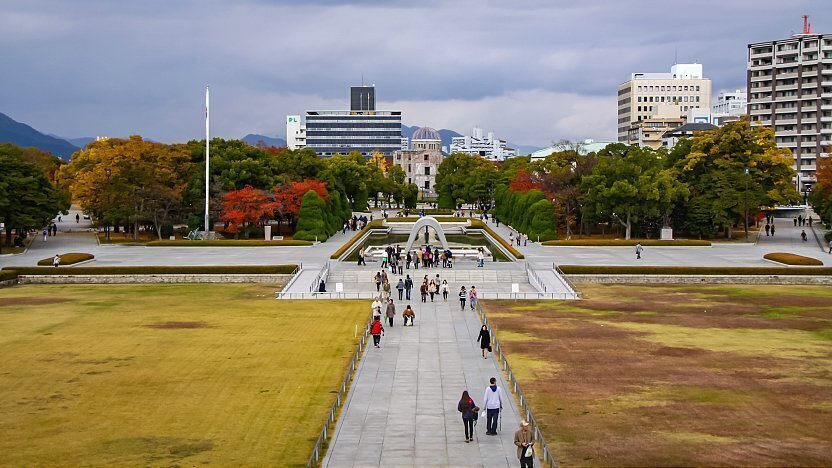
Hiroshima's Peace Memorial Park (���a�L�O����, Heiwa Kinen Kōen) is one of the most prominent features of the city. Even visitors not looking for it will likely stumble upon the large park of over 120,000 square meters. Its trees, lawns, and walking paths are in stark contrast to the surrounding downtown area.
Before the bomb, the area of what is now the Peace Park was the political and commercial heart of the city. For this reason, it was chosen as the pilot's target. Four years to the day after the bomb was dropped, it was decided that the area would not be redeveloped but instead devoted to peace memorial facilities.
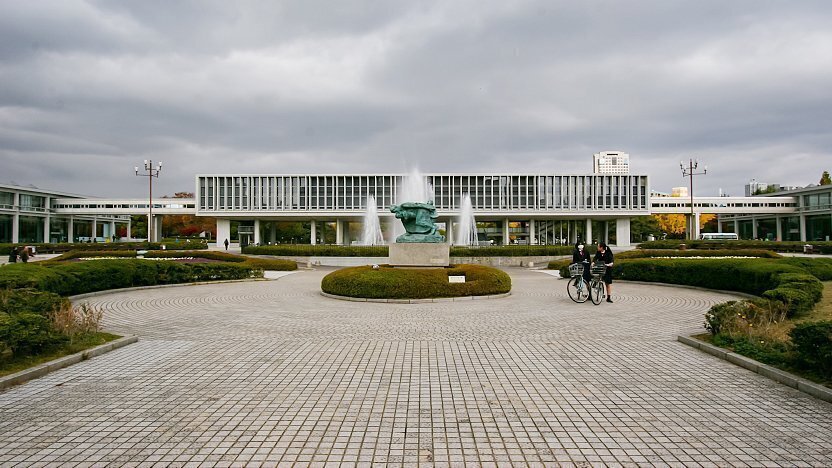
The park's main facility is the Peace Memorial Museum . Consisting of two buildings, the museum surveys the history of Hiroshima and the advent of the nuclear bomb. Its main focus though is on the events of August 6: the dropping of the bomb and its outcome in human suffering. The personal details displayed are quite upsetting and serve to remind that we should not take peace for granted.
The A-Bomb Dome , also known as the Hiroshima Peace Memorial, is what remains of the former Prefectural Industrial Promotion Hall. The building served as a location to promote Hiroshima's industries. When the bomb exploded, it was one of the few buildings to remain standing, and remains so today. A UNESCO World Heritage Site , the A-Bomb Dome is a tangible link to Hiroshima's unique past.
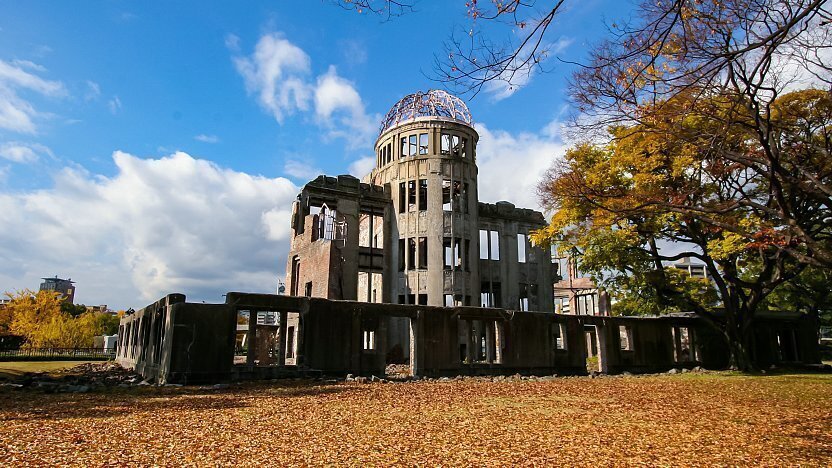
Between the Museum and the A-Bomb Dome is the Cenotaph for the A-Bomb Victims . The Cenotaph is an arched tomb for those who died because of the bomb, either because of the initial blast or exposure to radiation. Below the arch is a stone chest holding a register of these names, of which there are over 220,000.
Every year on the anniversary of the bomb, a ceremony is held at the park. Speeches are made, wreathes are laid at the Cenotaph, and a moment of silence is observed at 8:15 am, the precise moment of detonation. Other activities occur throughout the day, and many staff are employed to help foreign visitors.
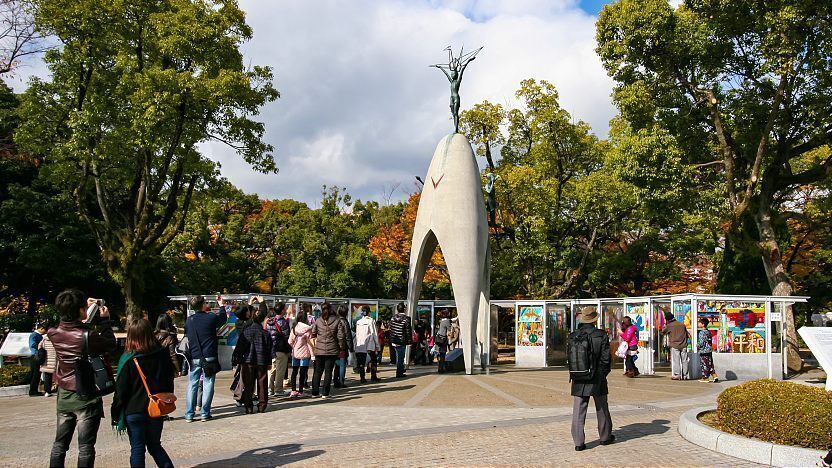

Getting there and around
From Hiroshima Station, take tram line 2 or 6 to the Genbaku-Domu Mae (�����h�[���O) stop. The ride takes 15 minutes and costs 220 yen one way. Alternatively, the Peace Memorial Park is served by the Hiroshima Sightseeing Loop Bus (Meipuru-pu).
How to get to and around Hiroshima
Hours and Fees
Hiroshima peace memorial museum.
Questions? Ask in our forum .
Links and Resources
Peace memorial museum, hotels around hiroshima.
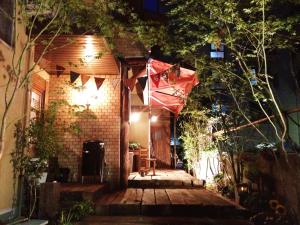
Experiences around Hiroshima
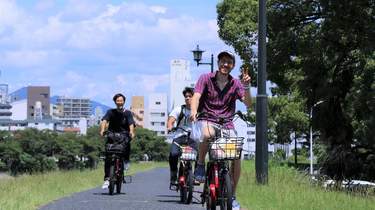
Take advantage of the search to browse through the World Heritage Centre information.
Share on social media
Unesco social media, hiroshima peace memorial (genbaku dome).
- Description
The Hiroshima Peace Memorial (Genbaku Dome) was the only structure left standing in the area where the first atomic bomb exploded on 6 August 1945. Through the efforts of many people, including those of the city of Hiroshima, it has been preserved in the same state as immediately after the bombing. Not only is it a stark and powerful symbol of the most destructive force ever created by humankind; it also expresses the hope for world peace and the ultimate elimination of all nuclear weapons.
Description is available under license CC-BY-SA IGO 3.0
Mémorial de la paix d'Hiroshima (Dôme de Genbaku)
Le Mémorial de la Paix d'Hiroshima, ou Dôme de Genbaku, fut le seul bâtiment à rester debout près du lieu où explosa la première bombe atomique, le 6 août 1945. Il a été préservé tel qu'il était juste après le bombardement grâce à de nombreux efforts, dont ceux des habitants d'Hiroshima, en espérant une paix durable et l'élimination finale de toutes les armes nucléaires de la planète. C'est un symbole dur et puissant de la force la plus destructrice que l'homme ait jamais créée, qui incarne en même temps l'espoir de la paix.
النصب التذكاري للسلام في هيروشيما (قبّة جينباكو)
يُعتبَر النصب التذكاري للسلام في هيروشيما، أو قبة جينباكو، المبنى الوحيد المتبقّي قرب المكان حيث انفجرت القنبلة النوويّة الأولى في 6 آب أغسطس 1945. وقد تمّت المحافظة على الشكل الذي كان عليه بعد قصف القنبلة، وذلك بفضل جهودٍ حثيثةٍ،ٍ نذكر منها جهود سكّان هيروشيما الذين يتطلّعون إلى السلام الدائم والتخلّص نهائيًّا من الأسلحة النوويّة كافةً على الكرة الأرضيّة. فهذا النّصب رمزٌ متين وصلبٌ للقوّة الأكثر تدميرًا التي اخترعها الإنسان حتى الآن، وفي الوقت نفسه رمز لجنوح الإنسان نحو السلام والمل به.
source: UNESCO/CPE Description is available under license CC-BY-SA IGO 3.0
广岛和平纪念公园(原爆遗址)
广岛和平纪念公园是1945年8月6日广岛原子弹爆炸区留下的唯一一处建筑。通过许多人的努力,包括广岛市民的努力,这个遗址被完好地保留了下来,一直保持着遭受原子弹袭击后的样子。广岛和平纪念公园不仅是人类历史上创造的最具毁灭性力量的象征,而且体现了全世界人们追求和平,最终全面销毁核武器的愿望。
Memorial de la Paz en Hiroshima (Cúpula de Genbaku)
El Memorial de la Paz de Hiroshima, llamado también la Cúpula de Genbaku, es la estructura del único edificio que permaneció en pie cerca del lugar donde explotó la primera bomba atómica el 6 de agosto de 1945. Gracias a los esfuerzos de innumerables personas –y en particular de los propios habitantes de Hiroshima– se ha conservado en el mismo estado en que quedó después de la explosión. Este sitio no sólo es un símbolo descarnado y recio de la fuerza más destructiva creada por el hombre en toda su historia, sino también una encarnación de los anhelos de paz mundial y de una supresión definitiva de todas las armas nucleares.
source: NFUAJ
Vredesmonument van Hiroshima (Genbakukoepel)
Toen de eerste atoombom ontplofte boven Hiroshima om kwart over acht 's ochtends op 6 augustus 1945 – en 140.000 mensen omkwamen – was dit gebouw het enige dat overeind bleef in de buurt van het hypocentrum van de inslag van de bom, zij het in skeletachtige vorm. Het werd in die staat bewaard bij de wederopbouw van de stad en later bekend als de Genbaku (Atoombom) koepel. Niet alleen is het een grimmig en krachtig symbool van de meest destructieve kracht die ooit door de mens is gemaakt, het monument spreekt ook hoop uit voor wereldvrede en de uiteindelijke uitbanning van alle kernwapens.
Source: unesco.nl
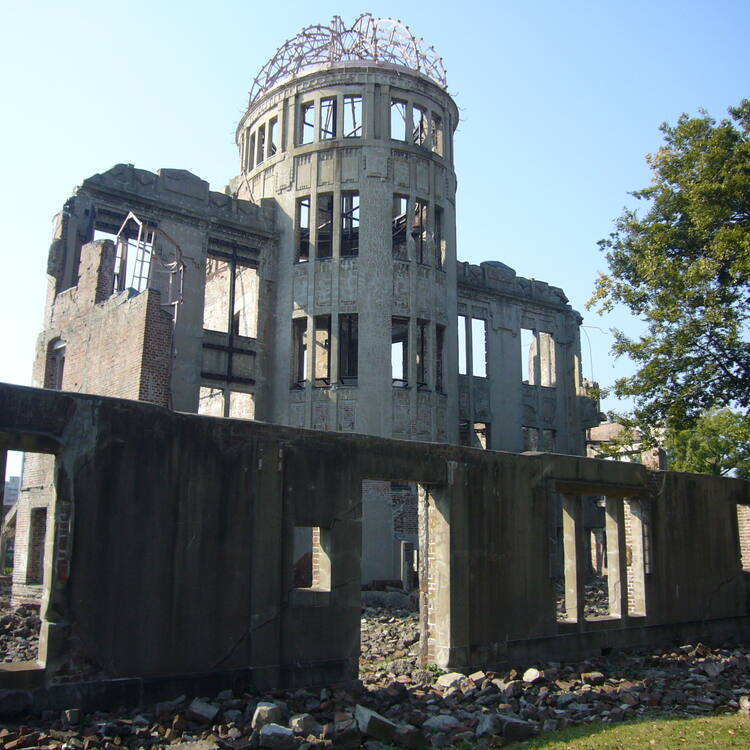
Outstanding Universal Value
Brief synthesis
The Hiroshima Peace Memorial (Genbaku Dome) is the only structure left standing near the hypocenter of the first atomic bomb which exploded on 6 August 1945, and it remains in the condition right after the explosion. Through the efforts of many people, including those of the city of Hiroshima, this ruin has been preserved in the same state as immediately after the bombing. Not only is it a stark and powerful symbol of the most destructive force ever created by humankind, it also expresses the hope for world peace and the ultimate elimination of all nuclear weapons. The inscribed property covers 0.40 ha in the urban centre of Hiroshima and consists of the surviving Genbaku Dome (“Genbaku” means atomic bomb in Japanese) within the ruins of the building. The 42.7 ha buffer zone that surrounds the property includes the Peace Memorial Park.
The most important meaning of the surviving structure of the Hiroshima Peace Memorial is in what it symbolizes, rather than just its aesthetic and architectural values. This silent structure is the skeletal form of the surviving remains of the Hiroshima Prefectural Industrial Promotional Hall (constructed in 1914). It symbolizes the tremendous destructive power, which humankind can invent on the one hand; on the other hand, it also reminds us of the hope for world permanent peace.
Criterion (vi): The Hiroshima Peace Memorial (Genbaku Dome) is a stark and powerful symbol of the achievement of world peace for more than half a century following the unleashing of the most destructive force ever created by humankind.
The Hiroshima Peace Memorial (Genbaku Dome) has been preserved as a ruin. It is all that remains of the Hiroshima Prefectural Industrial Promotional Hall ‘Hiroshima-ken Sangyo Shoreikan’ after the 1945 nuclear bomb blast. Inside the property, all the structural elements of the building remain in the same state as immediately after the bombing, and are well preserved. The property can be observed from the outside of the periphery fences and its external and internal integrity is well maintained. The buffer zone, including Hiroshima Peace Memorial Park, is defined both as a place for prayer for the atomic bomb victims as well as for permanent world peace.
Authenticity
In the last three conservation projects (1967, 1989-1990 and 2002-2003), minimum reinforcement with steel and synthetic resin was used in order to preserve the condition of the dome as it was after the atomic bomb attack. The Hiroshima Peace Memorial (Genbaku Dome) stands in its original location and its form, design, materials, substance, and setting are all completely authentic. It also maintains its functional and spiritual authenticity as a place for prayer for world peace and the ultimate elimination of all nuclear weapons.
Protection and management requirements
The Hiroshima Peace Memorial (Genbaku Dome) is designated as a historic site under Japanese 1950 Law for the Protection of Cultural Properties, and is managed by Hiroshima City under the guidance by the Hiroshima Prefectural Government and the Government of Japan. Financial and technical support is available from the Government of Japan. The park management office of Hiroshima City is located inside the Hiroshima Peace Memorial Park, and daily maintenance is conducted in cooperation with the division in charge of protecting cultural properties. Hiroshima City also conducts a detailed survey of its condition once every three years. A city beautification plan was developed by Hiroshima City that calls for this area to remain an attractive space appropriate to a symbol of the International Peace Culture City. Based on this beautification plan, landscape management standards seek to implement consultation for building height and alignment, as well as wall colors, materials and advertisement boards in the vicinity of the Hiroshima Peace Memorial Park included within the buffer zone. The protection of Peace Memorial Park was enhanced in 2007 with its designation as a Place for Scenic Beauty under the 1950 Law for the Protection of Cultural Properties.
- TSS Archive Project
- The City of Hiroshima
State of Conservation (SOC)
Protections by other conservation instruments.
1 protection / 1 element
- Mibu no Hana Taue, ritual of transplanting rice in Mibu, Hiroshima
Read more about synergies
Jump to mobile site
- Guide Services
- Museum Shop
- Peace Park Visitor's Lounge and cafe
- Accessibility
Exhibitions & Events
- Permanent Exhibitions
- Special Exhibitions
- Other Exhibitions
- Outline of the facilities
- Museum History
- Summary of the Number of Visitors
- Related Facilities
- Schmoe House
- About the Site

Hours and Admission
March-July 7:30am-7:00pm
August 7:30am-8:00pm (Open until 9:00pm on August 5 and 6)
September-November 7:30am-7:00pm
December-February 7:30am-6:00pm
To enter the permanent exhibition room during the extended hours (7:30am-8:30am and the time slots shown below), prior online reservation is necessary.
March-July 5:30pm-6:30pm
August 6:30pm-7:30pm (-8:30pm on August 5 and 6)
September-November 5:30pm-6:30pm
December-Feburuary 4:30pm-5:30pm
Days Closed
December 30 and 31
*Please note that the Library is closed from December 29 through January 1.
Three consecutive days in mid February.
*Visitors 65 years and older can enter the museum for 100 yen by showing their passport.
Visitor Guidelines
•There is no public parking in the Peace Memorial Park. Please use the paid parking facilities nearby.
● Please do not touch the exhibits or display cases (except the Hands-on Exhibits).
● Please keep quiet so as not to disturb other visitors.
● Large bags are not allowed into the Museum. (Coin lockers are available on the 1st floor of the East Building. Click here for the floor map.)
● When using writing utensils, please be careful not to deface the artifacts.
● Video and photography without flash is allowed for personal purposes (no application is required.) . However, tripods and selfie sticks are not allowed in the museum.
● Please be especially careful not to disturb other visitors with the shutter sounds of your camera including cell-phones.
● Photography with flash and/or for the purpose of publication requires an application in advance.
Click here for more information.
● Please refrain from talking on a cell phone in any part of the exhibition rooms.
● Eating and drinking are allowed only in the designated areas.
Visitors may consume food and drink in the Visitor’s Lounge on the 1st floor of the East Building.
Click here To view the floor map .
● Smoking is not permitted in anywhere in Hiroshima Peace Memorial Park and Museum.
The designated smoking area is located on the south side of the East Building across Heiwa Ōdōri Blvd.
Click here for the map.
● Please refrain from disturbing other visitors in the exhibition rooms.
● No dangerous objects may be brought into the Museum.
● Pets are not allowed in the Museum (except for guide, service, and hearing dogs).
● Please comply with any instructions given by the Museum staff.
- Tours & Experiences
- Tailor-made Trips
- Bahasa Indonesia
We are happy to see you again!
Continue with
Or use email.
No Account? Create one
Create account
Already have an account? Sign in
Quickly Sign up with
I agree to Japan Travel's Terms of Service and Privacy Policy . Terms of--> and acknowledge that Japan Travel's Privacy--> applies to me.-->
Email reset password link
Please check your inbox and click the link we will send to you.
- Hiroshima City

A Guide Into the Hiroshima Peace Memorial Museum
A must for any visitor to Hiroshima

To commemorate the 75th anniversary of the bombing of Hiroshima, a virtual tour of the museum has been released, as well as a Peace Park tour from the day of the anniversary event.
This imposing building of concrete and glass, raised above the ground by huge Le Corbusier inspired piloti, stands at the southern end of Hiroshima's Peace Memorial Park. Built in 1955 and part of architect Kenzo Tange's Peace Center design, it is visited by over a million visitors a year from across Japan and around the world who come to learn about the August 6, 1945 A-bombing and its aftermath.
The museum is divided into two sections. The first (the East Wing) begins with a history of the city and its development as a military center in the decades before the Second World War. Then follow some exhibits illustrating life during wartime, after which, the focus shifts to the development and decision to drop the A-bomb. Under a large reconstruction of the A-Bomb Dome , models of the city before and after the bombing, and a large scale photo of the "burnt plain" give the visitor an idea of the extent of the destruction at a city wide level. On the upper floor, the city's recovery and the difficulties faced by survivors ( hibakusha ) are outlined.
The East Wing closes with a large section that focuses on the threat of nuclear weapons and Hiroshima's ongoing effort to promote their abolition. The West Wing focuses more specifically on the damage caused by the bomb and the continued health effects of the radiation it released. There are displays of belongings left by victims, photos and other materials, some quite graphic, that convey the horror of the event. The descriptions alongside torn school uniforms and melted children's toys, while restrained, powerfully bring the huge event down to a human scale, and cannot fail to bring a lump to the throat or tears to the eyes. There are also some heart-wrenching details of those who succumbed to "Atomic Bomb Disease" in the months and years after the explosion, as well a telling of the very sad, but inspirational story of Sadako Sasaki and the peace cranes. Before the exit, there are several video terminals on which you can watch A-bomb survivors talk about some of their experiences. From here, there are also good views of the Peace Plaza out to the cenotaph and A-bomb Dome.
On the basement floor there are often additional thematic exhibitions, a display of recently donated exhibits, and a library which has a selection of English books and videos (access to this part of the museum is free of charge).
By no stretch of the imagination can a visit to this museum be described as fun. However, the history and legacy of the A-bombing are what bring most visitors to Hiroshima, so, however disturbing it may be, spending at least a couple of hours here is very worthwhile. Hope is also to be found here. Hiroshima endured the unendurable and has recovered from what at the time was thought to be an unrecoverable situation. The museum serves, not only, to document and preserve the memory of the event and those it affected, but also to promote its appeal for the abolition of nuclear weapons to prevent such a tragedy ever happening again. Hiroshima's commitment to spreading that message is evident in the nominal admission charge.
The Peace Museum really isn't a place to be rushed and it's not unusual for visitors to spend as much as 3 or 4 hours here. The museum does an excellent job of explaining the exhibits in English. Audio guides are also available for ¥300; the commentary doesn't add much to the East Wing displays, but it does include additional details to the personal stories attached to the exhibits in the West Wing. Whichever course you choose to take, you may like to figure in a few extra minutes to sit quietly in the lounge area between the two wings to "process" before moving onto the West Wing.
There is also a bookstore here which carries many bilingual publications, as well as T-shirt and postcards. Some overseas visitors feel nervous about how they will be received and avoid engaging with the volunteer guides for this reason. You will find, however, that as with people just about everywhere else in Hiroshima, they are in no way judgmental and are sincerely happy that you are taking the time to find out more about the tragedy. That said, it is perfectly understandable to want to move around the museum at your own pace, processing the exhibits by yourself.
Diving straight back into the bustle of city life after the museum can be something of a shock to the system. I recommend visiting the museum first, followed by some time in the park for contemplation and to provide a psychological buffer. There is a good chance that you will be approached by Japanese kids on school trips who will want to ask you some simple questions in English. Their giggles are infectious and can do a great deal to lift your spirits.
Finally, I strongly suggest that you resist the urge to hole up in your hotel. After the necessary contemplation, get out into the city and eat, drink and, yes, make merry, with its people. It's only then, I think, that you can get a true and full appreciation of what a special place Hiroshima is.
Find out more about Hiroshima Peace Memorial Museum .
- Things to Do in Hiroshima
- Peace Memorials of Hiroshima
- Share on Facebook
- Share on Twitter
- Copy link to share
By Paul Walsh
Community writer
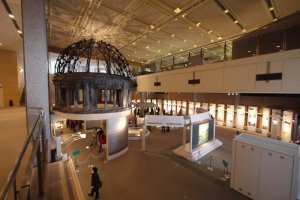
Information
Hiroshima Peace Memorial Museum
1-2 Nakajimacho, Naka Ward, Hiroshima, 730-0811 ( Directions )
hpmmuseum.jp
Book your trip
Find a nearby hotel, explore nearby.

Revisiting History at Hiroshima's Peace Memorial Museum
By Larry Knipfing

The Peace Memorial Park at Night
By Elena Lisina

Taking the Boat to Miyajima
By Manish Prabhune

Photo Highlights: Hiroshima Flower Festival
By Susan Tumanon
Top Articles
- Recommended

Tokyo One of the World's Most Walkable Cities

Guide to Golden Week

2024 Grand Sumo Tournaments

Kurobe Unazuki Canyon Route to Link with Tateyama Kurobe Alpine Route

Mount Omuro

Tokyo Takes 2nd Place on Top Coffee Cities List

Valley of Witches: a New Ghibli Park Attraction

Sapporo Beer Opens New Brewery in Tokyo’s Ebisu

Haneda Airport Ranked World's Cleanest

Guide to Bringing Medicines Into Japan

Your Name: Real-Life Locations in Tokyo

Hachiko Statue in Shibuya

Iwatayama Monkey Park

Shibuya Crossing

Daikoku Car Meet

Guide to Suica Cards

Kanamara Penis Festival

Japanese Urban Legends
More from this category.

Black Eggs of Owakudani, Hakone..
By Abby Rodriguez

Total Solar Eclipse in Japan
By Veronica Carnevale

Nabana no Sato Illumination
By Chris Glenn

Extraordinary Experiences in the..
Join the discussion.

Let us know how we can help.
Help us improve JapanTravel.com
We welcome any suggestions regarding this content. Your feedback is confidential and will be used to help improve this page.
Suggest an edit
https://en.japantravel.com/hiroshima/hiroshima-peace-memorial-museum/1102
Thank you for your support!
Your feedback has been sent.
- The Ultimate Guide To Hiroshima...
The Ultimate Guide to Hiroshima Peace Memorial Park

A tranquil green space between two rivers that was once the site of an unprecedented tragedy, Hiroshima Peace Memorial Park is an essential part of understanding Hiroshima City’s history. Here’s how to plan your visit.
From the end of the Edo era, the area that the Hiroshima Peace Memorial Park now occupies was a busy commercial district known as Nakajima where commercial goods were traded and transported to and from the adjacent Ōta River. When American forces dropped an atomic bomb on Hiroshima in August 1945, the area was completely decimated.
In 1949, the city of Hiroshima decided to convert the Nakajima area into a place of remembrance rather than rebuild it as it had been. The result was an expansive park covering 120,000 square metres (1.3 million square feet) that has been designed to encourage peaceful contemplation. Over the years, a series of memorials and monuments have been constructed dedicated to the people who lost their lives because of the bombing.
All of the park’s memorials are within walking distance from each other, so when visiting allow yourself time to stroll around and view them all, before taking some time to reflect ahead of continuing with the rest of the day’s activities .
Visit the Peace Memorial Museum
Hiroshima’s Peace Memorial Museum is also located within the Peace Park and is one of the city’s most-visited attractions . The museum opened in 1955 with the purpose of communicating the reality of the atomic bombing and its effects on the world. Inside, there are audio guides available to rent that provide detailed explanations and commentary about the exhibits. On display are artefacts belonging to the victims, photographs of Hiroshima before and after the bombing and other exhibits demonstrating both the immediate impact of the bombing and its after-effects.

What to see in the Peace Memorial Park
The Peace Memorial Park is home to several sculptures and monuments dedicated to the people who lost their lives, either during the bombing or as a result of radiation exposure. These are some of the most popular sights – and the stories behind them.
The A-Bomb Dome
Probably the city’s most recognisable sight, the Genbaku Dome, or A-Bomb Dome as it’s more commonly known, was designated a UNESCO World Heritage Site in 1996. The building, constructed in 1915, was originally used as a display hall for commercial products. Designed by Czech architect Jan Letzel, the dome was a rare example of European-style architecture in Japan at the time of its construction. Coupled with its scenic riverside location, the dome quickly became one of Hiroshima’s major landmarks.
When the atomic bomb was dropped in 1945 it exploded 160m (525ft) from the dome, setting the roof on fire and gutting the building. The ruins that can be seen today are all that remains. The A-Bomb Dome was one of the only buildings in the city to avoid complete destruction, and after the war ended the citizens of Hiroshima decided to keep the structure as a reminder of the events that took place

The Flame of Peace
After the bomb was dropped on Hiroshima, thousands of people died begging for water because of the fever and sickness they developed from the heat rays and fires that burned. The Flame of Peace sculpture serves as a memorial to those victims. This sculpture, designed by Kenzo Tange, represents two wrists joined together, and the two wings on each side represent two palms facing upwards towards the sky.
The flame at the top of the sculpture was lit in 1964 and is both a symbol of hope and a protest against the use of nuclear weapons. The peace flame will not be extinguished until the world is rid of all nuclear weapons. In 2016, Barack Obama became the first US president to visit Hiroshima since the bombing and gave a speech in front of the Flame of Peace alongside Japan’s Prime Minister Shinzo Abe.

Memorial Monument
“Let all the souls here rest in peace, for we shall not repeat the evil” are the words engraved into the cenotaph for the victims of the atomic bomb in Hiroshima. Inside the empty tomb are registers containing the names of every single known victim of the bombing, regardless of nationality. The domed arch shape of the memorial is designed to shelter the souls of those names that rest inside from the rain, and new names are regularly added to the records each year. At present, there are more than 300,000 names listed within the hundreds of volumes.
Memorial Tower
This unusual five-tiered tower was built with funds donated by the families of students who died in the bombing. More than 8,000 students from local middle schools and high schools were ordered by the government to help with the war effort by working in Hiroshima’s factories, and many of them died in the bombing. This tower serves as a memorial to approximately 6,300 of these students who perished.

Sankichi Tōge Monument
Sankichi Tōge, a young poet who was exposed to the radiation from the A-bomb at his home in Hiroshima City, became involved in the peace movement and an advocate for the abolition of nuclear weapons following World War II. Toge wrote a collection of poems about the nuclear bomb entitled Genbaku Shisu , which received international praise before he passed away in 1953 at the young age of 36. You’ll find the Sankichi Tōge Monument located near the park’s Peace Memorial Hall.
Children’s Peace Monument
This monument was created to commemorate all the children who died in the atomic bombing. The idea for the monument came from a group of school children in Hiroshima who were shocked when one of their classmates, a girl called Sadako Sasaki, died from leukaemia 10 years after radiation exposure from the bomb. Before Sadako died, she spent her days folding hundreds of paper cranes after her father told her they had the power to grant wishes.

Gathering support from students across Japan and internationally, Sadako’s classmates were able to raise enough funds to create this bronze statue of a girl lifting a paper crane.
The Peace Bell was built in 1964 as a symbol of the anti-war movement and the campaign against nuclear weapons. The bell features a series of engravings, including a world map without any borders; Japanese symbols that represent the desire to abolish nuclear weapons; and a mirror to reflect those who ring the bell. The Peace Bell can be found by the park’s lotus flower pond, which features flowers planted in prayer for the bomb victims.

How to get to Hiroshima Peace Memorial Park
The Hiroshima Peace Memorial Park is easily accessed using the city’s tram system. Take tram line two or six from Hiroshima Station and get off at the Genbaku-Domu Mae stop by the A-Bomb Dome. Alternatively, take one of the sightseeing loop buses from Hiroshima station.
Since you are here, we would like to share our vision for the future of travel - and the direction Culture Trip is moving in.
Culture Trip launched in 2011 with a simple yet passionate mission: to inspire people to go beyond their boundaries and experience what makes a place, its people and its culture special and meaningful — and this is still in our DNA today. We are proud that, for more than a decade, millions like you have trusted our award-winning recommendations by people who deeply understand what makes certain places and communities so special.
Increasingly we believe the world needs more meaningful, real-life connections between curious travellers keen to explore the world in a more responsible way. That is why we have intensively curated a collection of premium small-group trips as an invitation to meet and connect with new, like-minded people for once-in-a-lifetime experiences in three categories: Culture Trips, Rail Trips and Private Trips. Our Trips are suitable for both solo travelers, couples and friends who want to explore the world together.
Culture Trips are deeply immersive 5 to 16 days itineraries, that combine authentic local experiences, exciting activities and 4-5* accommodation to look forward to at the end of each day. Our Rail Trips are our most planet-friendly itineraries that invite you to take the scenic route, relax whilst getting under the skin of a destination. Our Private Trips are fully tailored itineraries, curated by our Travel Experts specifically for you, your friends or your family.
We know that many of you worry about the environmental impact of travel and are looking for ways of expanding horizons in ways that do minimal harm - and may even bring benefits. We are committed to go as far as possible in curating our trips with care for the planet. That is why all of our trips are flightless in destination, fully carbon offset - and we have ambitious plans to be net zero in the very near future.

The Ultimate Guide to Hiroshima Castle

Food & Drink
The 10 best resturants in hiroshima.

Bars & Cafes
The best cafés in hiroshima, japan.

Guides & Tips
How to spend 24 hours in hiroshima: a complete one-day itinerary.

Things To Know Before Visiting Hiroshima, According to the People Who Live There

Restaurants
The best breakfast and brunch spots in hiroshima.

Hiroshima Oysters: Where To Eat the City's Famous Delicacy

An Experts’ Guide to the Best Bars in Hiroshima, Japan

Places to Stay
The best hotels to book in hiroshima for every traveller.

An Insider’s Guide to the Best Restaurants in Hiroshima

See & Do
An insider's guide to the best things to do in hiroshima.

A Solo Traveller’s Guide to Hiroshima
Culture trip spring sale, save up to $1,100 on our unique small-group trips limited spots..

- Post ID: 1001447327
- Sponsored? No
- View Payload

A Guide To Hiroshima’s Peace Memorial Park And Museum

Table of Contents
Are you planning a trip to Hiroshima? A visit to the city’s Peace Memorial Park and Museum is a must-see experience. This site serves as a powerful reminder of the tragedy that occurred on August 6, 1945, when an atomic bomb was dropped on the city, killing thousands of people and leaving a lasting impact on the world.
As you explore the park and museum, you’ll gain a deeper understanding of the devastation caused by nuclear weapons and the importance of working towards peace and disarmament. The site also serves as a tribute to the victims of the bombing and a symbol of hope for a peaceful future.
In this guide, we’ll provide you with practical information for visiting the park and museum, as well as insights into the cultural and educational activities available. Let’s begin our journey towards understanding and remembrance.
Key Takeaways
- Hiroshima’s Peace Memorial Park and Museum serves as a powerful symbol of peace and a reminder of the devastating consequences of nuclear war.
- The park covers an area of about 122,000 square meters and is home to various monuments and memorials, including the Cenotaph and the Flame of Peace.
- The museum houses exhibitions and artifacts that tell the story of the atomic bombing of Hiroshima and its aftermath, highlighting the importance of promoting peace and disarmament.
- Visitors can learn about the efforts towards nuclear disarmament and the importance of international cooperation in promoting peace, and the experience of visiting the museum can inspire visitors to take action towards creating a better world.
Overview of the Site’s History
You’re about to learn the fascinating history behind Hiroshima’s Peace Memorial Park and Museum. The site is located in the center of Hiroshima city and was built to commemorate the victims of the atomic bombing that took place on August 6, 1945.
The park and museum were created as a symbol of peace and a reminder of the devastating consequences of war. The park covers an area of about 122,000 square meters and is home to various monuments and memorials, including the iconic A-Bomb Dome, which is the only remaining structure from the bombing.
The museum, on the other hand, houses exhibitions and artifacts that tell the story of the bombing and its aftermath. Visiting the site is a powerful and emotional experience that is sure to leave a lasting impact on anyone who goes there.
The Peace Memorial Park
As you walk through the expansive green space, you’ll come across various monuments and sculptures dedicated to the victims of the tragic event. The Peace Memorial Park serves as a reminder of the catastrophic atomic bombing of Hiroshima by the United States during World War II. The park was established in 1954, and it covers an area of approximately 120,000 square meters.
The park features numerous attractions, including the Atomic Bomb Dome, the Children’s Peace Monument, the Cenotaph for the A-bomb Victims, and the Peace Flame. The Cenotaph is a curved monument that contains the names of all the people who died due to the bombing, and it is inscribed with the famous words "Rest in peace, for the mistake shall not be repeated."The Peace Flame has been burning since 1964, and it will continue to burn until all nuclear weapons are eliminated from the world. The Children’s Peace Monument is a tribute to Sadako Sasaki, a young girl who died from leukemia caused by the radiation from the bombing. Visitors can also find various sculptures and gardens that represent different messages of peace.
The Peace Memorial Museum
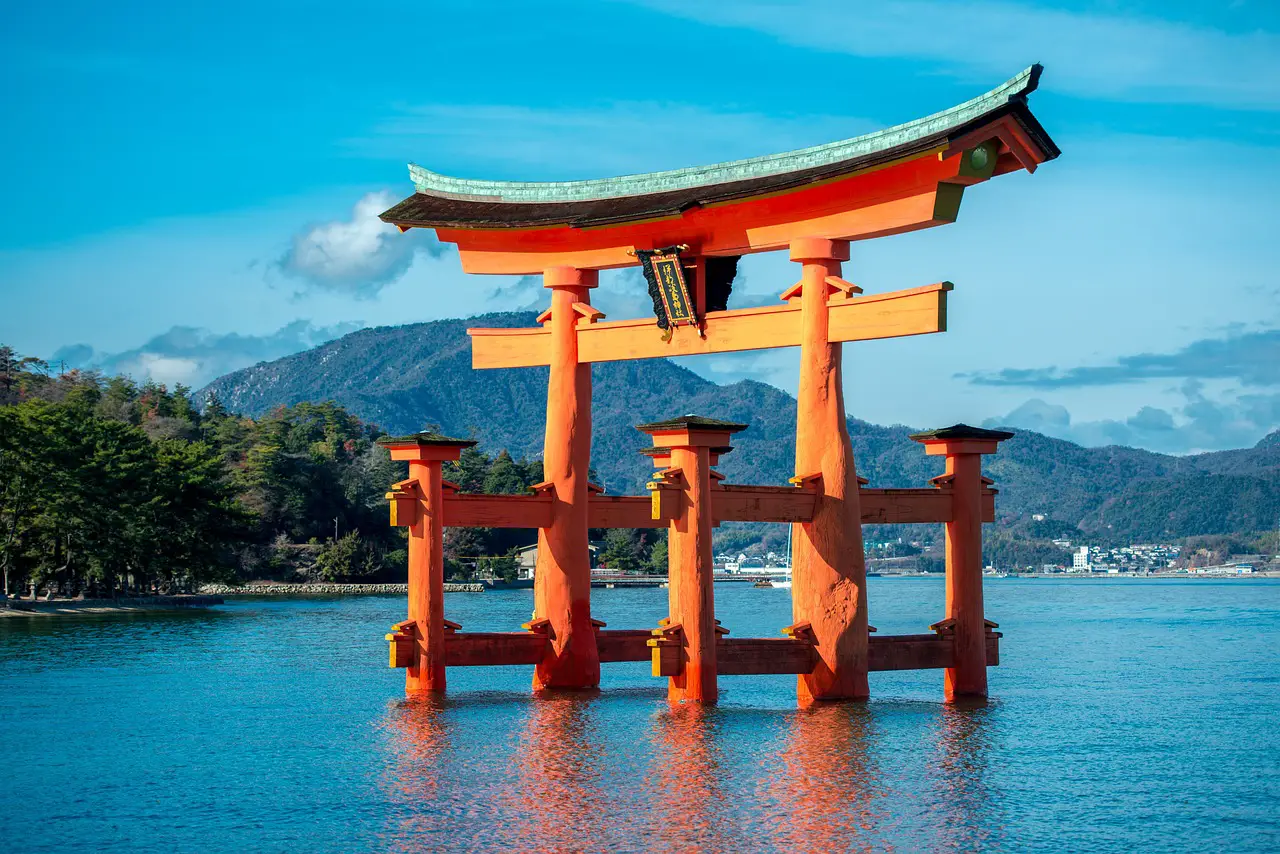
When you enter the museum, you’ll be transported back in time to the day of the bombing and gain a better understanding of the devastating impact it had on Hiroshima and its people.
The museum exhibits various artifacts, including photographs, personal belongings, and testimonies from survivors, to provide a detailed account of the tragedy. One of the most striking exhibits is the melted clock, which stopped at 8:15 AM, the exact moment when the bomb detonated.
As you walk through the museum, you’ll also learn about the aftermath of the bombing, including the efforts of the survivors to rebuild their lives and the city.
The museum highlights the importance of promoting peace and disarmament, and it serves as a powerful reminder of the consequences of nuclear warfare.
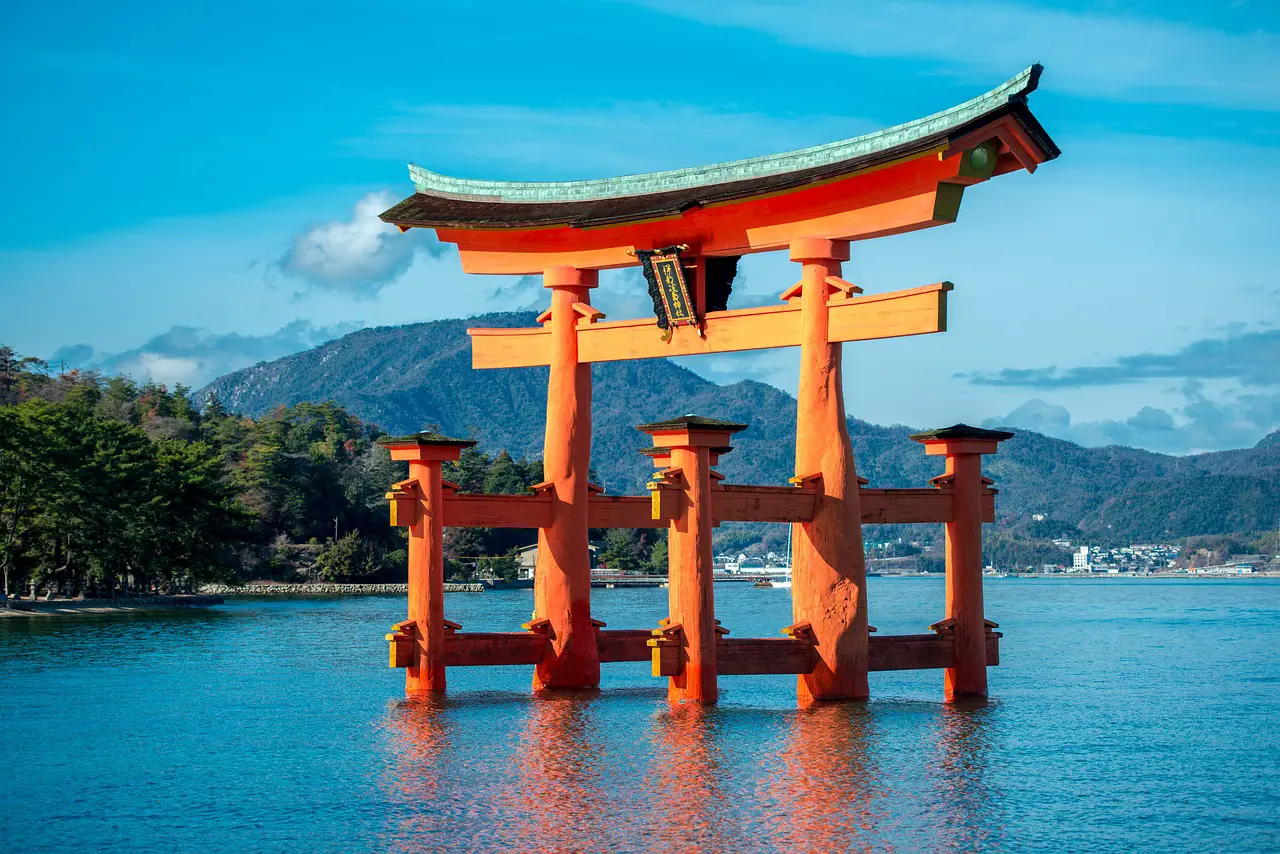
Visiting the Peace Memorial Museum is a humbling experience that will leave you with a deeper appreciation for the value of peace and the need to prevent such tragedies from happening again.
The Importance of Remembrance
You may wonder why it’s important to remember the past events that took place in Hiroshima.
Firstly, it’s a way of honoring the victims who lost their lives during the atomic bombing.
Secondly, learning from the past helps us avoid making the same mistakes in the future.
Finally, promoting peace and disarmament is crucial to ensuring that such a tragedy never happens again.
Honoring the Victims
Honoring the victims of the atomic bombing, visitors to the Peace Memorial Park can see the Cenotaph and the Flame of Peace, which symbolizes the hope for a world without nuclear weapons. The Cenotaph is a curved concrete structure that holds the names of all the victims of the atomic bombing. It is inscribed with the words "Let all the souls here rest in peace, for we shall not repeat the evil."The Flame of Peace is a constantly burning flame that was lit in 1964 and will continue to burn until all nuclear weapons are abolished.
To give you a better idea of the impact of the bombing, here is a table showing the number of casualties from the bombing in Hiroshima and Nagasaki.
Honoring the victims and remembering their suffering is an important part of the Peace Memorial Park and Museum experience. By doing so, we can continue to work towards a world without nuclear weapons and prevent such a tragedy from ever happening again.
Learning from the Past
Take a moment to reflect on the lessons that can be learned from the past and how we can use them to create a better future. The Hiroshima Peace Memorial Park and Museum serves as a reminder of the devastating consequences of nuclear weapons and the importance of peace.
By learning about the history of the atomic bombing and the suffering it caused, we can understand the dangers of warfare and the need to work towards global disarmament. The museum features exhibits that showcase the impact of the bombing on the city and its people. From personal accounts to artifacts, the museum offers a sobering look at the catastrophic event.
Visitors can also learn about the efforts towards nuclear disarmament and the importance of international cooperation in promoting peace. By taking the time to learn about the past, we can work towards a more peaceful future for all.
Promoting Peace and Disarmament
Now that you’ve learned about the history of the atomic bombing and its devastating effects, it’s time to focus on the present and the future.
The Peace Memorial Park and Museum in Hiroshima isn’t just a place to remember the past, but also a place to promote peace and disarmament.
One of the main goals of the park and museum is to spread the message that nuclear weapons should never be used again.
Through various exhibits and displays, visitors can learn about the dangers of nuclear weapons and the importance of disarmament.
The museum also hosts events and conferences centered around peace and nuclear disarmament, bringing together people from all over the world to discuss these important issues.
By promoting peace and disarmament, the park and museum hope to prevent future tragedies like the atomic bombing of Hiroshima.
In addition to promoting peace and disarmament, the park and museum also aim to raise awareness about the impact of war and violence on people’s lives.
Through exhibits and memorials, visitors can learn about the human cost of war and the importance of finding peaceful solutions to conflicts.
By educating people about the consequences of war and violence, the park and museum hope to inspire visitors to work towards a more peaceful world.
So, as you explore the park and museum, remember that you’re not just learning about the past, but also contributing to a brighter future.
Practical Information for Visitors
When planning your visit to Hiroshima’s Peace Memorial Park and Museum, it’s important to take note of the practical information for visitors.
The park and museum are open daily from 8:30am to 6:00pm, with last admission at 5:30pm.
Admission fees vary depending on age and whether you wish to visit both the museum and the park or just one of them.
Guided tours and audio guides are available in multiple languages, making it easier for visitors to learn about the history and significance of the site.
The park and museum also offer accessibility and facilities for those with disabilities, including accessible restrooms and elevators.
Opening Hours and Admission Fees
Visitors can save money by checking the admission fees and opening hours of the Peace Memorial Park and Museum before planning their trip. The museum and park are open every day except December 30 and 31, and the hours of operation are from 8:30 AM to 6 PM.
Meanwhile, the entrance fee for the museum is 200 yen for adults and 100 yen for students. However, admission is free for elementary school students and younger.
Moreover, visitors can also purchase a combined ticket for the museum and park for only 400 yen. This ticket is valid for two days and includes admission to the museum’s main building and east building, as well as the park’s various monuments and facilities.
It’s highly recommended to take advantage of this offer to fully experience and appreciate the history and significance of the Peace Memorial Park and Museum.
Guided Tours and Audio Guides
Don’t miss out on the immersive experience of a guided tour or audio guide, which can help you delve deeper into the stories and significance of this historic site.
The guided tours are conducted in various languages, including English, and are led by knowledgeable and passionate guides. These tours provide a comprehensive overview of the park and museum, highlighting the most important exhibits and sharing the personal stories of those affected by the atomic bombing.
If you prefer to explore the park and museum at your own pace, audio guides are available in several languages, including English, Japanese, and Chinese. These guides provide detailed information about each exhibit and are an excellent way to gain a deeper understanding of the significance of this site.
Whether you choose a guided tour or an audio guide, you’ll gain a greater appreciation for the importance of promoting peace and understanding in the world.
Accessibility and Facilities
The site offers convenient facilities and services, such as accessible entrances and restrooms, to ensure that all visitors can comfortably explore and appreciate the exhibits. The Peace Memorial Museum provides wheelchair rental services, and the park has barrier-free paths and elevators for easy access to different areas. Moreover, the museum offers audio guides with subtitles and braille guides for visually impaired visitors, making the exhibits accessible to everyone.
In addition to these facilities, the park also has restrooms equipped with baby-changing tables, as well as nursing rooms for mothers. There are also vending machines and a food court area for visitors to take a break and grab a bite to eat. The park staff is friendly and always ready to assist visitors with any questions or concerns they may have.
Overall, the accessibility and facilities at the Peace Memorial Park and Museum make it a welcoming and inclusive place for all visitors.
Cultural and Educational Activities
If you’re interested in learning about the impact of the atomic bomb on Hiroshima and the importance of peace, there are plenty of cultural and educational activities to participate in at the Peace Memorial Park and Museum.
The museum offers a variety of exhibitions, including personal accounts from survivors, artifacts from the bombing, and information on the history and aftermath of the event. You can also visit the Atomic Bomb Dome, which serves as a reminder of the destructive power of nuclear weapons and the need for peace.
In addition to the museum exhibits, there are also cultural activities available, such as traditional Japanese tea ceremonies and calligraphy lessons. These activities provide an opportunity to experience Japanese culture and reflect on the importance of peace in a more personal and interactive way.
The Peace Memorial Park and Museum is not only a place to learn about the past, but also a space to contemplate and work towards a peaceful future.
Other Sites of Interest in Hiroshima
Now that you’ve explored the cultural and educational activities within the Peace Memorial Park and Museum, it’s time to venture out and discover more of what Hiroshima has to offer.
There are plenty of other sites of interest that are worth a visit during your stay in this beautiful city. One such site is the Hiroshima Castle. Located just a short distance away from the Peace Memorial Park, this impressive castle dates back to the 16th century and provides a glimpse into Japan’s feudal past.
You can explore the castle grounds and see the various exhibits that showcase the castle’s history. Other sites of interest include the Shukkeien Garden, which is a traditional Japanese garden that offers a peaceful retreat from the hustle and bustle of the city.
The Mazda Museum is also worth a visit, especially for car enthusiasts. Lastly, if you’re interested in modern art, the Hiroshima City Museum of Contemporary Art is a must-see. With its impressive collection of contemporary art and design, you’ll be sure to leave feeling inspired.
Reflections on the Meaning and Impact of the Visit
As you reflect on your visit to Hiroshima and the Peace Memorial Park and Museum, you may find yourself overwhelmed with personal emotions and responses to the experience.
You may also begin to see the connections between the events of the past and current global issues, such as nuclear disarmament and peaceful conflict resolution.
This realization may lead to a call to action, as you recognize the importance of working towards a more peaceful and just world. But despite the darkness of the past, there’s always hope for a brighter future.
Your visit to Hiroshima may have left you with a sense of optimism and determination to make the world a better place.
Personal Responses and Emotions
Imagine walking through the Peace Memorial Museum and feeling a deep sense of empathy for the victims of the atomic bomb. As you move from one exhibit to another, you can’t help but feel overwhelmed by the sheer magnitude of the devastation that occurred in Hiroshima.
Here are four things you might experience while walking through the museum:
You may feel a sense of sadness as you see the artifacts and personal belongings of those who perished in the bombing. The museum has preserved and displayed these items in order to honor the victims and ensure that their stories aren’t forgotten.
You may also feel a sense of anger towards the leaders who made the decision to drop the atomic bomb. The museum doesn’t shy away from the political implications of the bombing and encourages visitors to consider the ethical questions surrounding the use of nuclear weapons.
You may feel inspired by the stories of resilience and hope that are also featured in the museum. The exhibits include accounts of survivors who went on to rebuild their lives and work towards a more peaceful world.
Finally, you may feel a sense of obligation to continue the legacy of the museum and work towards a world without nuclear weapons. The museum isn’t just a place for reflection, but also a call to action for visitors to work towards a more peaceful future.
Connections to Global Issues
Visiting the museum highlights the interconnectedness of global issues, as the devastating effects of nuclear warfare have far-reaching consequences for all nations. The museum’s exhibits vividly illustrate the catastrophic impact of the atomic bomb, not only on Hiroshima but also on the world.
The displays show how the bombing led to the arms race and nuclear proliferation, which continue to pose a threat to global security. It also highlights the urgent need for international cooperation to prevent the use of nuclear weapons.
Moreover, the museum’s emphasis on the human cost of the bombing underscores the importance of fostering empathy and understanding among people of different cultures and nations. The museum’s message of peace and reconciliation resonates with visitors from around the world, reminding them of the need to work together to address global challenges.
The experience of visiting the museum can inspire you to take action to promote peace and justice in your community and beyond.
Call to Action and Hope for the Future
You can’t help but feel a sense of urgency to make a difference after experiencing the emotional impact of the exhibits at Hiroshima’s Peace Memorial Museum. The stories of the survivors and the devastation caused by the atomic bomb serve as a reminder of the catastrophic consequences of war and the importance of peace. As you walk through the museum, you can’t help but be moved by the images and artifacts that capture the horrors of that fateful day in August 1945.
But amidst the devastation, there is also a message of hope. The call to action for a peaceful and nuclear-free future is loud and clear. The exhibits inspire you to take action towards creating a better world, one that values peace over war, and one that is free from the threat of nuclear weapons. As you leave the museum, you are filled with a renewed sense of purpose and determination to make a difference. You know that it won’t be an easy journey, but you are willing to do your part to create a better future for all.
Frequently Asked Questions
What is the current political relationship between japan and the united states, particularly after the dropping of the atomic bombs on hiroshima and nagasaki during world war ii.
You may be interested to know that the current political relationship between Japan and the United States is one of strong alliance and friendship.
While the dropping of the atomic bombs on Hiroshima and Nagasaki during World War II was a tragic event, both countries have worked hard to move past it and build a positive relationship.
Today, Japan and the United States are close partners in many areas, including trade, security, and cultural exchange.
The two countries have a mutual respect for each other’s cultures and traditions, and continue to work towards a peaceful and prosperous future for all.
How has the local community in Hiroshima been affected by the presence of the Peace Memorial Park and Museum?
The local community in Hiroshima has been deeply affected by the presence of the Peace Memorial Park and Museum. As a resident, you’ve undoubtedly seen the impact it’s had on the city.
The park serves as both a solemn reminder of the tragedy that occurred in 1945 and a symbol of hope for peace and reconciliation. Many locals have dedicated their lives to preserving the memory of those who lost their lives in the bombing and advocating for peace.
The museum provides an opportunity for visitors to learn about the history of the bombing and its devastating effects on the people of Hiroshima. Overall, the Peace Memorial Park and Museum have become an integral part of the community and a symbol of resilience in the face of tragedy.
Are there any controversies surrounding the way in which the history of the atomic bombing is presented in the Peace Memorial Museum?
There are indeed controversies surrounding the way in which the history of the atomic bombing is presented in the Peace Memorial Museum.
Some argue that the museum only presents one side of the story and fails to acknowledge the complex factors that led to the bombing, such as Japan’s own war crimes.
Others criticize the museum for depicting Japan as a victim without acknowledging the suffering of other countries affected by Japanese aggression during World War II.
Despite these criticisms, the museum remains an important site for promoting peace and raising awareness about the devastating consequences of nuclear weapons.
How has the memorialization of the atomic bombing evolved over time, and what role have different groups and individuals played in shaping it?
You might be interested to know that the memorialization of the atomic bombing has evolved over time, with different groups and individuals playing a significant role in shaping it.
Initially, the focus was on the destruction caused by the bomb and the suffering of the victims. However, over the years, the emphasis has shifted towards promoting peace and nuclear disarmament.
Survivors of the bombing, known as Hibakusha, have played a crucial role in this evolution by sharing their stories and advocating for peace.
Additionally, the city of Hiroshima itself has taken on the role of promoting peace, hosting events and conferences aimed at nuclear disarmament.
Overall, the memorialization of the atomic bombing has become an important symbol of the need for peace and the dangers of nuclear weapons.
What steps are being taken by the city of Hiroshima and the Japanese government to prevent the use of nuclear weapons in the future?
To prevent the use of nuclear weapons in the future, the city of Hiroshima and the Japanese government have taken various steps.
Firstly, they’ve been promoting the idea of nuclear disarmament globally.
Secondly, they’ve been providing assistance to countries that want to develop peaceful nuclear programs.
Thirdly, they’ve been working to educate young people about the dangers of nuclear weapons, through various programs and initiatives.
Lastly, they’ve been advocating for a ban on nuclear weapons, and have been involved in various international efforts to achieve this.
Overall, the city of Hiroshima and the Japanese government are committed to preventing the use of nuclear weapons and are taking concrete steps towards achieving this goal.
As you leave the Peace Memorial Park and Museum, take a moment to reflect on the impact of your visit. You’ve just experienced a profound reminder of the horrors of war and the importance of peace. Take this message with you as you go about your daily life, and share it with others.
Remember that it’s up to each and every one of us to work towards a more peaceful world. As you continue your travels in Hiroshima and beyond, keep this experience close to your heart. Remember the stories you heard, the sights you saw, and the feeling of hope that permeates the city.
Let this visit inspire you to continue learning and growing, and to find ways to make a positive impact on the world. Thank you for taking the time to visit Hiroshima’s Peace Memorial Park and Museum. May the message of peace and remembrance stay with you always.
More Post Related To Travel To Hiroshima
12 days hiroshima travel itinerary with kids.
If you’re ready to embark on an unforgettable adventure with your family, then get ready to explore Hiroshima like never before! In just 12 days, you’ll discover the rich history, breathtaking scenery, and vibrant culture that this incredible city has to offer. From the
14 Days Hiroshima Travel Itinerary With Kids
Looking to take your kids on a trip they won’t forget? Well, buckle up and get ready for 14 days of adventure in Hiroshima! From exploring the historic Peace Memorial Park to embarking on an island adventure in Miyajima, this itinerary has something for
15 Days Hiroshima Travel Itinerary With Kids
If you’re looking for a family-friendly adventure, look no further than Hiroshima. In just 15 days, you can experience the rich history, stunning sights, and cultural wonders this city has to offer. From exploring the Hiroshima Peace Memorial Park to discovering the hidden gems
22 Days Hiroshima Travel Itinerary With Kids
Are you ready to embark on a 22-day adventure through the captivating city of Hiroshima with your little ones? Buckle up and get ready to explore historic sites, indulge in family-friendly activities, uncover cultural gems, and dive into thrilling outdoor adventures. This travel itinerary
28 Days Hiroshima Travel Itinerary With Kids
Are you ready to embark on an unforgettable adventure in Hiroshima with your little ones? Get ready to immerse yourself in the rich history, indulge in delicious culinary delights, and explore the great outdoors. With this 28-day travel itinerary, you’ll discover the hidden gems
4 Days Hiroshima Travel Itinerary With Kids
Imagine yourself and your family embarking on a captivating journey to Hiroshima, Japan. In just four days, you can immerse yourselves in the rich history, thrilling adventures, breathtaking landscapes, and enchanting cultural experiences this vibrant city has to offer. From exploring historic sites and
5 Days Hiroshima Travel Itinerary With Kids
Are you ready to embark on an unforgettable journey with your little ones? Get ready to discover the wonders of Hiroshima in this 5-day travel itinerary designed just for you and your kids. From exploring historic sites to immersing in cultural experiences, this adventure
8 Days Hiroshima Travel Itinerary With Kids
Are you ready for an incredible family adventure in Hiroshima? Get ready to explore this vibrant city with your kids for 8 amazing days! Did you know that Hiroshima is home to the famous Hiroshima Peace Memorial Park, which attracts millions of visitors every
10 Days Hiroshima Travel Itinerary With Kids
Looking for a family-friendly adventure in Hiroshima? You’ve come to the right place! In this 10-day itinerary, you’ll discover the rich history, breathtaking sights, and fun-filled attractions that this vibrant city has to offer. From exploring Peace Memorial Park to embarking on an exciting
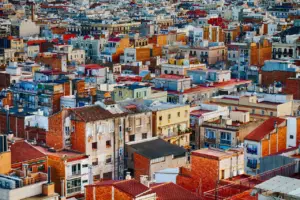
5 Charming Neighborhoods To Visit In Hiroshima
If you’re planning a trip to Japan, make sure to put Hiroshima on your list of must-visit destinations. This city, located in the western part of Honshu Island, is known for its tragic past, but it’s also a vibrant and charming place with plenty
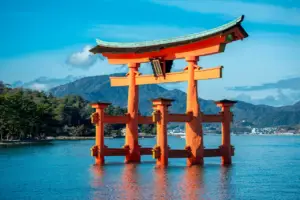
5 Historic Sites To Explore In Hiroshima
Are you planning a trip to Hiroshima and looking for some historic sites to explore? Look no further! Hiroshima is home to many important landmarks that tell the story of its past, and visiting them can give you a deeper understanding of the city’s

5 Cultural Experiences To Have In Hiroshima
Are you planning a trip to Japan and looking for some cultural experiences in Hiroshima? You’re in luck! Hiroshima offers a unique blend of history and tradition, and there are plenty of opportunities to immerse yourself in the local culture. First on your list
5 Scenic Spots In Hiroshima For Stunning Views
Are you planning a trip to Hiroshima and wondering where to go for breathtaking views? Look no further! We’ve compiled a list of five scenic spots that offer stunning vistas of the city and its surroundings. First on the list is the Hiroshima Peace

5 Scenic Day Trips From Hiroshima
If you’re visiting Hiroshima, you’d be remiss to not explore the surrounding areas. Luckily, there are plenty of scenic day trips to take that will leave you in awe of the natural beauty and cultural significance of the region. From the tranquil Miyajima Island
5 Museums In Hiroshima For Art And Culture Enthusiasts
Are you an art and culture enthusiast planning a trip to Hiroshima? Well, you’re in luck! Hiroshima has a rich history and culture that can be explored through its many museums. From art to literature, there’s something for everyone. Here are five museums that
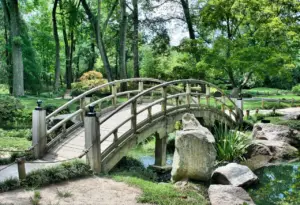
5 Tranquil Gardens To Visit In Hiroshima
Looking for a peaceful escape from the hustle and bustle of city life? Look no further than Hiroshima’s tranquil gardens. With a rich history and breathtaking landscapes, these gardens offer a serene oasis amidst the chaos of city living. Whether you’re a nature lover

7 Beautiful Temples And Shrines In Hiroshima
Are you planning a trip to Hiroshima and looking for some spiritual and cultural experiences? Look no further than the city’s beautiful temples and shrines. From ancient Buddhist temples to iconic Shinto shrines, Hiroshima has a wealth of religious sites that offer a glimpse
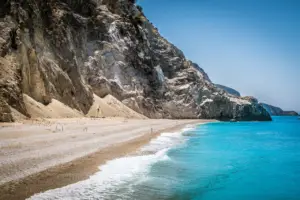
7 Day Trips To Hiroshima’s Surrounding Islands
Are you looking for a break from the hustle and bustle of the city? Look no further than Hiroshima’s surrounding islands. With seven unique day trips to choose from, there’s something for everyone. From the famous floating torii gate of Miyajima Island to the

5 Unique Souvenirs To Bring Home From Hiroshima
Are you planning a trip to Hiroshima and wondering what unique souvenirs to bring back home? Look no further as we have curated a list of five items that are sure to leave a lasting impression. From food to traditional crafts, these souvenirs are
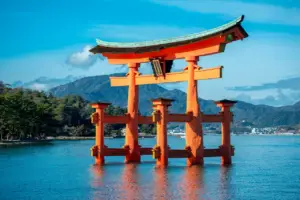
7 Hidden Gems In Hiroshima Off The Beaten Path
Are you tired of following the typical tourist routes in Hiroshima? Do you want to explore the city and discover hidden gems that are off the beaten path? Look no further! In this article, we’ll introduce you to 7 lesser-known destinations that will make
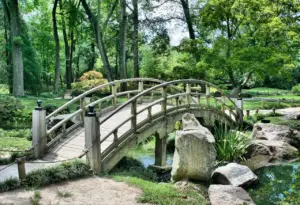
7 Parks In Hiroshima For Relaxation And Recreation
Are you looking for a way to escape the hustle and bustle of city life in Hiroshima? Look no further than the city’s many parks. With beautiful gardens, historic landmarks, and opportunities for outdoor recreation, the parks of Hiroshima offer something for everyone. Take
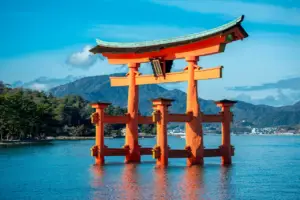
10 Offbeat Experiences In Hiroshima For Curious Travelers
Are you an adventurous traveler looking for something off the beaten path? Hiroshima may be known for its tragic past, but it offers so much more than just history. With its picturesque landscapes, vibrant culture, and delicious cuisine, Hiroshima is a must-visit destination for

7 Unique Experiences To Have In Hiroshima
Are you ready to explore one of Japan’s most historically significant cities? Hiroshima is a city that is both heartbreaking and inspiring, with its past marked by the devastating atomic bombing during World War II. But Hiroshima is also a city that has rebuilt
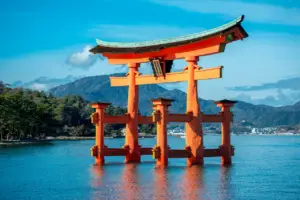
8 Instagram-Worthy Spots In Hiroshima
Are you looking for some Instagram-worthy spots to add to your travel itinerary in Hiroshima? Look no further! From historical landmarks to stunning natural scenery, Hiroshima has it all. Here are eight spots that are sure to make your followers double-tap. First up is

A Guide To Hiroshima’s Local Cuisine: Savory Delights
Are you a foodie looking for a new culinary adventure? Look no further than Hiroshima’s local cuisine! This city is known for its savory delights that will tantalize your taste buds and leave you wanting more. One of the most famous dishes in Hiroshima

A Guide To Hiroshima’s Local Festivals And Events
If you’re looking for a unique and exciting cultural experience, look no further than Hiroshima’s local festivals and events. From the stunning displays of fireworks to the delicious food festivals, Hiroshima has something for everyone. One of the most popular events is the Hiroshima
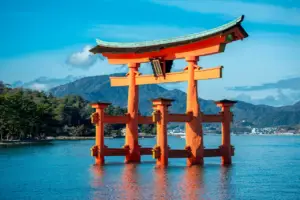
Exploring Hiroshima On A Budget: 5 Money-Saving Tips
If you’re on a budget, exploring Hiroshima might seem like an impossible dream. However, this city has plenty to offer for those who don’t have a lot of money to spend. With a little bit of planning and some insider knowledge, you can discover
A Review Of The Best Okonomiyaki Restaurants In Hiroshima
Are you a foodie looking for a unique culinary experience in Japan? Then you must try Okonomiyaki, the savory pancake that originated in Hiroshima. This dish is a must-try for anyone visiting Hiroshima, and with so many restaurants offering their take on the dish,
A Review Of The Best Sake Breweries In Hiroshima
Are you a sake lover looking to explore the best breweries in Hiroshima? Well, you’re in luck! Hiroshima is known for its high-quality sake, and there are several breweries that you definitely don’t want to miss. In this article, we’ll take you on a

Hiroshima For Peace Activists: Understanding The Legacy
If you’re a peace activist, understanding the legacy of Hiroshima is crucial to your work. The atomic bombing of Hiroshima on August 6, 1945, is one of the most significant events in human history. The bombing not only killed tens of thousands of people,
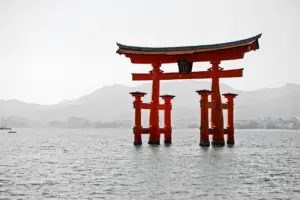
Exploring Miyajima Island: Itsukushima Shrine And Mount Misen
Are you looking for a unique and unforgettable travel experience? Look no further than Miyajima Island, home to the stunning Itsukushima Shrine and the breathtaking Mount Misen. This small island off the coast of Hiroshima, Japan, is a natural paradise that offers a range

Hiroshima By Bike: Exploring The City On Two Wheels
If you’re looking for a unique and active way to explore the city of Hiroshima, why not try renting a bike? With its flat terrain and well-maintained bike paths, Hiroshima is the perfect city to explore on two wheels. Not only will you get
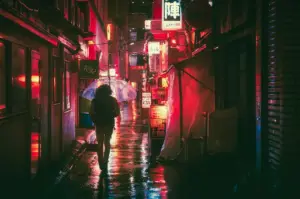
Hiroshima Street Food: Tasty Bites And Snacks
Are you feeling hungry and adventurous? Then it’s time to explore the delicious world of Hiroshima street food! This city in Japan is known for its savory and sweet snacks that are perfect for a quick bite or a full meal. From the famous

Hiroshima Transportation Guide: Getting Around With Ease
Are you planning a trip to Hiroshima and wondering how to navigate the city’s transportation system? Look no further! Hiroshima offers a variety of transportation options to help you get around with ease. From trains to buses, taxis to bicycles, and even ride-sharing services,
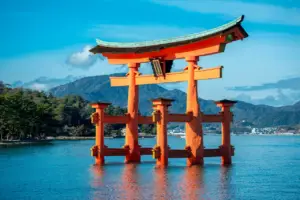
Hiroshima Travel Guide: Tips For Exploring The Historic City
Are you planning a trip to Hiroshima, Japan? This historic city is known for its tragic past but has risen from the ashes to become a vibrant and resilient destination. With so much to see and do, it can be overwhelming to plan your

Hiroshima Vs. Tokyo: Contrasting Urban Landscapes
Are you planning a trip to Japan and wondering which city to visit between Hiroshima and Tokyo? Both cities are unique and offer contrasting urban landscapes that will satisfy different interests and preferences. In this article, we will explore the historical significance of Hiroshima
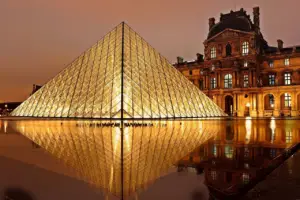
Hiroshima’s Best Museums: History, Art, And Technology
Are you planning a trip to Hiroshima and wondering which museums to visit? Look no further! Hiroshima boasts a variety of museums that cater to different interests, from history and art to technology. You are sure to find something that piques your curiosity and
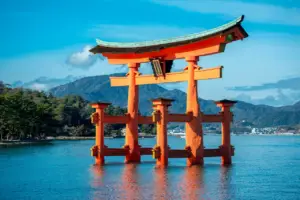
Hiroshima With Kids: Family-Friendly Activities And Attractions
Are you planning a family trip to Hiroshima? There are plenty of family-friendly activities and attractions that will keep your kids entertained during your visit. From exploring historical sites to enjoying the local cuisine, Hiroshima has something for everyone in the family. One of

Hiroshima’s Art And Culture: Museums And Galleries
When traveling to Hiroshima, Japan, you may be drawn to the city’s rich history and tragic past. However, it’s important to also explore the thriving art and culture scene that has emerged since the devastation of the atomic bomb. Hiroshima is home to numerous
Hiroshima’s Best Ramen Shops: A Noodle Lover’s Guide
Are you a noodle lover on the hunt for the best ramen in Hiroshima? Look no further! We have compiled a list of the city’s top ramen shops for you to indulge in. From traditional tonkotsu to modern twists on the classic dish, Hiroshima’s
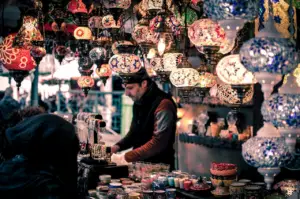
Hiroshima’s Best Souvenir Shops: Take Home A Piece Of History
Are you planning a trip to Hiroshima and wondering what souvenirs to bring back home? Look no further! Hiroshima is not only famous for its tragic history but also for its unique and meaningful souvenirs. Bringing back a piece of Hiroshima’s history will not

Hiroshima’s Culinary Delights: Okonomiyaki And More
Are you a foodie looking for your next culinary adventure? Look no further than Hiroshima, Japan. This city is home to some of the most delicious and unique dishes in all of Japan, with a focus on seafood and regional ingredients. One dish you

Hiroshima’s Nightlife: Bars, Clubs, And Karaoke
Are you looking for a vibrant and exciting nightlife scene in Hiroshima? Look no further than Nagarekawa, the city’s thriving district for bars, clubs, and karaoke. With a wide variety of options and a lively atmosphere, Nagarekawa is the perfect place to spend your
Hiroshima’s Historical Sites: Remembering World War Ii
Are you interested in history and want to learn more about the tragic events that occurred during World War II? Then a visit to Hiroshima’s historical sites is a must. This Japanese city is known for being the target of the first atomic bomb
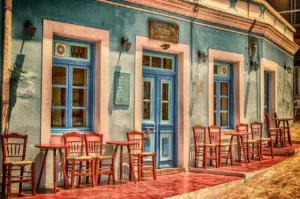
Hiroshima’s Hidden Eateries: Off-The-Beaten-Path Dining
If you’re a foodie looking for an adventure, you’ll love Hiroshima’s hidden eateries. Tucked away in alleyways and side streets, these off-the-beaten-path dining spots offer a taste of authentic Japanese cuisine that you won’t find in guidebooks. From cozy izakayas to trendy cafes, there’s
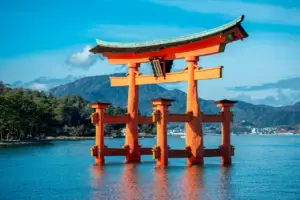
The Ultimate Hiroshima Itinerary: 3 Days Of Cultural Immersion
Are you ready for a cultural journey through Japan’s historic city of Hiroshima? With this three-day itinerary, you’ll experience the city’s rich history, breathtaking scenery, and delicious cuisine. From paying your respects at the Hiroshima Peace Memorial Park to trying Hiroshima-style okonomiyaki, this itinerary
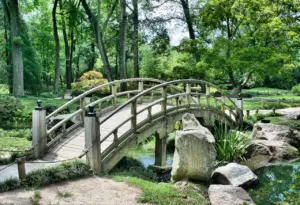
Hiroshima’s Peaceful Gardens: Serenity Amidst The City
Are you seeking a moment of tranquility amidst the hustle and bustle of the city? Look no further than Hiroshima’s peaceful gardens. These gardens offer a serene escape from the concrete jungle and provide a glimpse into Japan’s rich history and culture. The Hiroshima

Hiroshima’s Shukkei-En Garden: A Haven Of Tranquility
Welcome to Hiroshima’s Shukkei-en Garden, a peaceful oasis in the midst of a bustling city. As you step through the garden’s entrance, you’ll be transported to a world of tranquility and natural beauty. With its carefully designed layout, seasonal changes, and unique features, this
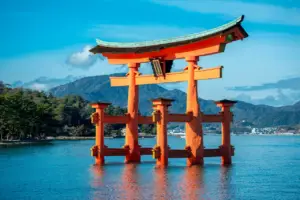
The Ultimate Showdown: Hiroshima Castle Vs. Hiroshima Peace Memorial Museum
Are you planning a trip to Hiroshima and wondering which landmark to prioritize? Look no further than this ultimate showdown between Hiroshima Castle and the Hiroshima Peace Memorial Museum. Both landmarks hold significant historical and cultural value, making it a tough decision to choose
The Battle Of Okonomiyaki: Hiroshima-Style Vs. Osaka-Style
Are you a fan of savory pancakes? Then you must have heard of Okonomiyaki – the Japanese dish that’s a cross between a pancake and an omelette. But did you know that there’s a fierce rivalry between the two main styles of Okonomiyaki –
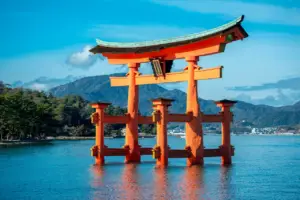
10 Must-Visit Attractions In Hiroshima
Are you planning a trip to Hiroshima and wondering what attractions to visit? Look no further as we have compiled a list of 10 must-visit attractions in Hiroshima. From the iconic Atomic Bomb Dome to the serene Shukkei-en Garden, these attractions offer a glimpse
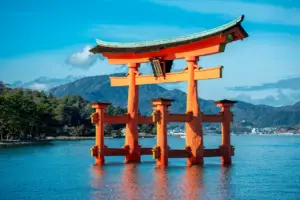
10 Essential Japanese Phrases For Travelers In Hiroshima
Are you planning a trip to Hiroshima and want to be prepared with some essential Japanese phrases? Look no further! In this article, we will provide you with ten phrases that will come in handy during your travels in Hiroshima. From ordering food to
10 Delicious Foods To Try In Hiroshima
Are you planning a trip to Hiroshima and wondering what delicious foods to try? Look no further! We’ve got a list of 10 must-try dishes that will satisfy any foodie’s cravings. First up on the list is Okonomiyaki, a savory pancake filled with various
Continue Reading
5 Iconic Landmarks To See In Tokyo
Tokyo, the capital city of Japan, is a bustling metropolis that boasts a unique blend of traditional and modern cultures. It is a city that never sleeps, where the neon lights of skyscrapers and the traditional architecture of temples and shrines coexist in perfect

5 Exciting Festivals In Tokyo
Tokyo is a city that never sleeps, and it is a place where one can find a wide variety of exciting festivals throughout the year. These festivals not only offer a glimpse of Japanese culture, but also provide an opportunity to experience the joy
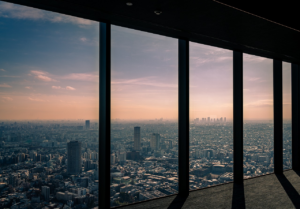

5 Family-Friendly Activities In Tokyo
Tokyo is a bustling city filled with endless activities and attractions to explore. From its lively streets, savory cuisine, and rich culture, Tokyo is a perfect destination for families seeking a unique vacation experience. If you are planning to visit Tokyo with your family,

5 Thrilling Theme Parks In Tokyo
Tokyo is one of the most vibrant cities in the world, with a plethora of attractions and activities for locals and tourists alike. One of the most exciting things to do in Tokyo is to visit its numerous theme parks. These parks offer a

5 Relaxing Onsen (Hot Springs) Near Tokyo
Japan is a country that is famous for its natural hot springs, or onsen. These onsen are considered an integral part of Japanese culture, and many people make a point to visit them for relaxation and rejuvenation. Tokyo, the bustling capital city of Japan,
5 Temples And Shrines To Visit In Tokyo
Tokyo is a city that is steeped in history and tradition, and one of the best ways to experience this is by visiting the many temples and shrines that can be found throughout the city. These sacred sites offer a glimpse into the country’s

7 Beautiful Cherry Blossom Spots In Tokyo
Tokyo is a city that is vibrant and bustling at any time of the year, but it takes on a special charm during spring when the cherry blossoms are in full bloom. Cherry blossoms, or sakura in Japanese, are a national symbol of Japan,

5 Unique Souvenirs To Buy In Tokyo
Tokyo, the capital city of Japan, is a hub of culture and tradition. It offers a plethora of unique experiences to its visitors, ranging from its delicious cuisine to its vibrant nightlife. However, one of the most memorable experiences of Tokyo is the opportunity
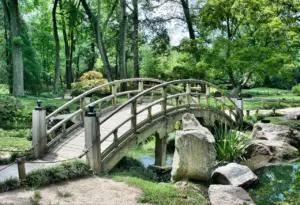
7 Beautiful Parks In Tokyo For Relaxation
Tokyo, the bustling capital of Japan, is a city that never sleeps. From its bright neon lights to its busy streets, the city is always buzzing with energy. However, amidst the hustle and bustle, Tokyo is also home to some of the most beautiful

7 Free Things To Do In Tokyo
Tokyo, the capital city of Japan, is a bustling metropolis that never sleeps. With its incredible blend of modernity and tradition, Tokyo is a city that offers something for everyone. However, with so much to see and do, Tokyo can be an expensive place

8 Instagram-Worthy Spots In Tokyo
Tokyo, the bustling capital city of Japan, is a hub of modernity and tradition. With its vibrant energy and unique blend of old and new, Tokyo is a city that never fails to enchant visitors. From its iconic landmarks to its hidden gems, Tokyo
7 Unique Experiences To Have In Tokyo
Tokyo is a bustling metropolis that offers a unique blend of traditional culture and modern technology. It’s no surprise that Tokyo is a popular destination for tourists seeking a one-of-a-kind experience. Whether it’s the neon-lit streets of Shinjuku or the serene beauty of the
7 Hidden Gems In Tokyo Off The Beaten Path
Tokyo is a bustling city known for its bright lights, busy streets, and popular tourist attractions. However, beyond the well-trodden paths of Tokyo lies a world of hidden gems waiting to be discovered. From charming shopping streets to tranquil gardens, Tokyo’s off-the-beaten-path locations offer
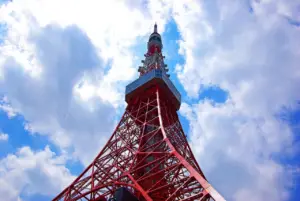
10 Must-Visit Attractions In Tokyo
Tokyo, the capital city of Japan, is a bustling metropolis known for its futuristic technology, rich cultural heritage, and vibrant city life. The city is home to a plethora of attractions that cater to all interests, ranging from historical landmarks to modern-day theme parks.

A Foodie’s Guide To Tokyo: 10 Must-Try Dishes
Tokyo is a city that needs no introduction when it comes to food. It is a hub of gastronomic delights that draws in foodies from all over the world. From street food vendors to Michelin-starred restaurants, Tokyo has it all. The city’s culinary scene
A Guide To Tokyo’s Neighborhoods: Where To Stay And Explore
Tokyo, the capital city of Japan, is a bustling metropolis that draws in millions of tourists every year. This vibrant city is a blend of traditional Japanese culture and modern technology, making it an exciting destination for travelers from all over the world. With

10 Offbeat Museums In Tokyo Worth Visiting
Tokyo is a city that is renowned for its cultural and historical attractions, and is considered one of the most fascinating cities in the world. While the city is home to many iconic landmarks and museums, there are also a number of interesting and

Exploring Tokyo’s Art Scene: Galleries And Museums
Tokyo is known for its vibrant art scene, home to some of the world’s most renowned galleries and museums. The city is a hub for contemporary and traditional Japanese art, as well as international works from around the globe. With a rich culture and
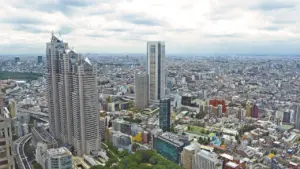
The Battle Of Tokyo’s Skyline: Tokyo Tower Vs. Tokyo Skytree
The city of Tokyo is known for its bustling streets, innovative technology, and stunning skyline. Two towering structures, Tokyo Tower and Tokyo Skytree, stand out among the many buildings that make up the city’s landscape. These structures have become symbols of Tokyo and are
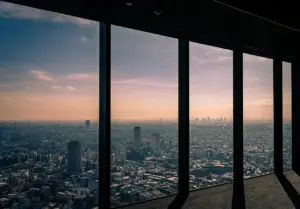
Exploring Tokyo On A Budget: 5 Money-Saving Tips
Tokyo is undoubtedly one of the most fascinating and vibrant cities in the world, with its unique blend of ancient traditions and cutting-edge technology. However, exploring this bustling metropolis can be quite expensive, especially for budget-conscious travelers. Fortunately, there are several ways to experience
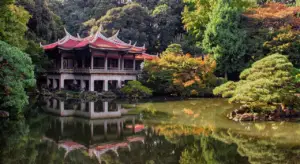
Exploring Tokyo’s Parks And Gardens: Nature In The Metropolis
Tokyo, the bustling and modern metropolis of Japan, may not be the first place that comes to mind when thinking of green spaces and nature. However, amidst the towering skyscrapers and busy streets, Tokyo is home to a vast array of parks and gardens

The Ultimate Shopping Showdown: Ginza Vs. Shibuya
Tokyo is a city that offers a unique shopping experience for visitors and locals alike. With a plethora of shopping districts, it can be challenging to decide where to start your shopping journey. In this article, we will explore two of Tokyo’s most popular

Tokyo Cuisine: A Culinary Journey Through The City
Tokyo, the bustling capital city of Japan, is a melting pot of cultures, traditions, and flavors. Its culinary scene is renowned worldwide for its exceptional variety, quality, and innovation. From traditional Japanese dishes to international cuisine, Tokyo has it all. This article aims to
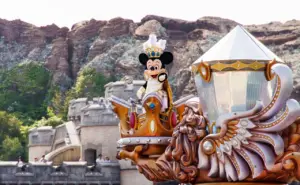
The Ultimate Tokyo Itinerary: 3 Days Of Adventure
Tokyo, the bustling capital of Japan, is a city that offers a unique blend of history, culture, and modernity. With its towering skyscrapers, iconic landmarks, and vibrant neighborhoods, Tokyo has something to offer for every kind of traveler. For those seeking adventure, Tokyo is
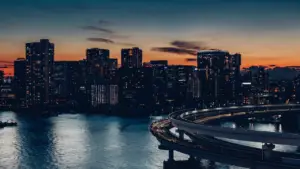
Tokyo By Night: 7 Spectacular Views Of The City
Tokyo, the capital city of Japan, is renowned for its bustling streets, vibrant culture, and breathtaking views. The city comes alive at night, with a dazzling array of neon lights, bustling night markets, and an electric atmosphere that is sure to captivate visitors. For

Tokyo For Anime Lovers: Must-Visit Otaku Destinations
Tokyo is a city that has captured the hearts of anime lovers around the world. As the birthplace of some of the most iconic anime series and characters, Tokyo is a mecca for otaku enthusiasts seeking to immerse themselves in the world of anime.
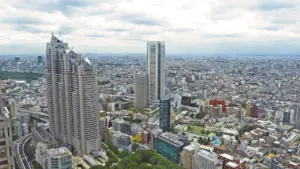
Tokyo On A Shoestring: Budget-Friendly Sightseeing Options
Tokyo is an incredible city that offers a unique blend of traditional culture and modern technology. However, it is also known for being a notoriously expensive destination, which can be discouraging for those on a tight budget. But fear not, as there are plenty
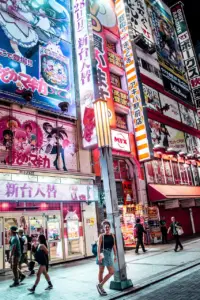
Tokyo Nightlife: 7 Hotspots For An Unforgettable Evening
Tokyo, the bustling capital city of Japan, is a hub for vibrant nightlife and entertainment. Known for its eclectic blend of modernity and tradition, the city offers a plethora of options for tourists and locals alike to explore its nightlife scene. From karaoke bars
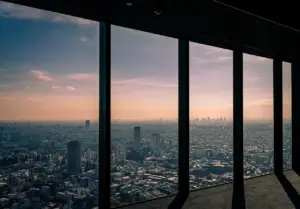
Tokyo For History Buffs: 6 Historical Sites To Visit
Tokyo, the capital city of Japan, is a bustling metropolis that is known for its modernity and technological advancements. However, beneath the surface of this futuristic city lies a rich history that dates back centuries. For history buffs, Tokyo is a treasure trove of
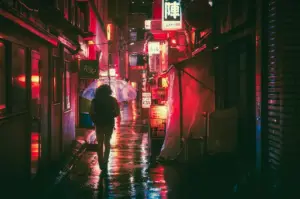
Tokyo Street Food: 8 Tasty Bites To Try
Tokyo is renowned for its vibrant street food scene. From savory snacks to sweet treats, the Japanese capital has an abundance of mouth-watering options that cater to all tastes and preferences. Whether you are a foodie looking to explore the city’s culinary offerings or
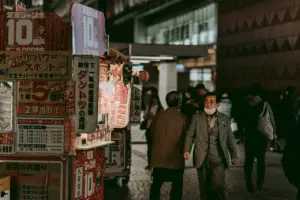
Tokyo Shopping Spree: 8 Must-Visit Shopping Districts
Tokyo is a bustling metropolis renowned for its vibrant culture, historical landmarks, and unique shopping experiences. From designer boutiques to traditional Japanese markets, the city offers a diverse range of shopping districts that cater to every taste and budget. In this article, we will

Tokyo Shopping Guide: Luxury Brands And Unique Boutiques
Tokyo is a shopper’s paradise, offering a vast array of luxury brands and unique boutiques. From high-end fashion to quirky and unique fashion, Tokyo has it all. The city is known for its fashion-forward culture, and its shopping districts are no exception. Shibuya is
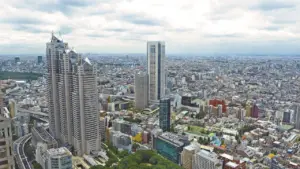
Tokyo Travel Guide: Tips For First-Time Visitors
Tokyo is a vibrant city that offers a unique blend of traditional Japanese culture and modern technological advancements. As one of the most populous cities in the world, Tokyo can be overwhelming to first-time visitors. However, with proper planning and preparation, tourists can make
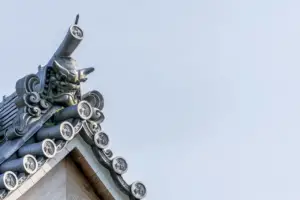
Tokyo Vs. Kyoto: Which City Should You Visit?
When it comes to planning a trip to Japan, deciding which city to visit can be a daunting task. Tokyo and Kyoto are two of the most popular destinations in the country, both offering unique experiences and attractions. Tokyo is a modern metropolis with
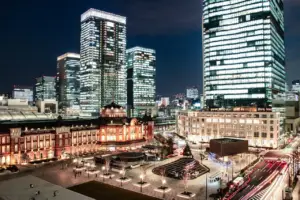
Tokyo Transportation Guide: Navigating The City With Ease
Tokyo, the bustling capital city of Japan, is known for its modernity, culture, and efficient transportation system. For tourists and locals alike, navigating Tokyo’s vast transportation network can be intimidating at first, but with a little knowledge and preparation, it can be a breeze.
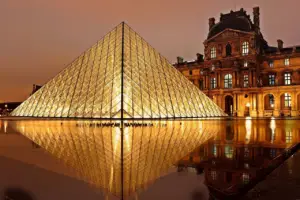
Tokyo’s Best Museums: A Cultural Exploration
Tokyo is a city that is rich in culture and history, and its museums are a testament to its past and present. From ancient art to modern technology, there are a plethora of museums to explore in Tokyo. This article will take you on

Tokyo’s Best Rooftop Bars: Sky-High Drinking Experiences
Tokyo’s skyline is a sight to behold, with towering skyscrapers gleaming in the sunlight during the day and twinkling like stars at night. For those looking to enjoy a drink with a view, Tokyo’s rooftop bars offer unrivaled experiences. From sleek and modern to

Tokyo With Kids: 10 Fun Activities For The Whole Family
Tokyo is a bustling city that is full of life and energy. It is a popular destination for tourists from all over the world, and it has a lot to offer to families who are looking for a fun and exciting vacation. Whether you

Tokyo’s Quirky Cafes: Cats, Owls, And Hedgehogs
Tokyo, the bustling capital city of Japan, is known for its unique and quirky cafes that offer more than just food and drinks. One of the most popular trends in Tokyo’s cafe scene is animal cafes, where customers can interact with various animals while

Tokyo’s Best Ramen: A Noodle Lover’s Guide
Ramen is a staple in Japanese cuisine, and Tokyo is home to some of the best ramen shops in the world. For noodle lovers, Tokyo is a paradise with an abundance of options to choose from. From traditional tonkotsu broth to innovative vegetarian options,
Tokyo’s Street Fashion: Trends And Iconic Styles
Tokyo is a city known for its vibrant and unique street fashion culture. From the colorful and playful styles of Harajuku to the edgy and modern looks of Shibuya, Tokyo’s street fashion scene is a reflection of the city’s diverse and dynamic population. The

5 Charming Islands To Visit In Okinawa
Looking for a tropical getaway that’s off the beaten path? Look no further than Okinawa, Japan’s southernmost prefecture. Known for its crystal-clear waters, white sand beaches, and unique culture, Okinawa is home to a number of charming islands just waiting to be explored. Here
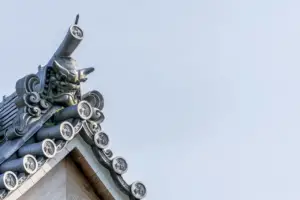
Tokyo’s Traditional Culture: Geisha, Sumo, And Tea Ceremonies
Tokyo, the bustling capital city of Japan, is renowned for its modernity and technological advancements. However, beyond the glitz and glamour of its high-rise buildings and neon-lit streets, Tokyo is also home to a rich and vibrant traditional culture that dates back centuries. From
5 Cultural Experiences To Have In Okinawa
Are you looking for a cultural adventure in Japan? Look no further than Okinawa, a stunning island prefecture located in the south of the country. With a unique blend of Japanese and Ryukyuan culture, Okinawa offers a plethora of cultural experiences that you won’t

5 Museums In Okinawa For History And Nature Enthusiasts
Are you a history or nature enthusiast planning a trip to Okinawa? You’re in luck because there are plenty of museums in the area that cater to your interests. Whether you want to learn about the rich history of the Ryukyu Kingdom or explore

5 Historic Sites To Explore In Okinawa
Welcome to Okinawa, a beautiful island located in the southernmost part of Japan. Known for its rich culture and history, Okinawa is home to several historic sites that are worth exploring. In this article, we will take you on a journey through time as
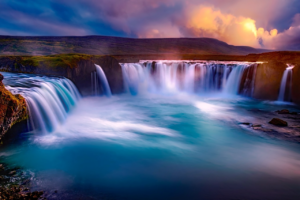
5 Stunning Waterfalls To Explore In Okinawa
Are you ready for an adventure in Okinawa? If you’re a nature lover, then exploring the island’s stunning waterfalls should be at the top of your to-do list. From the majestic Hiji Falls to the peaceful Nara Falls, there are plenty of options for

5 Tranquil Gardens To Visit In Okinawa
Looking for a peaceful escape from the hustle and bustle of modern life? Why not visit one of the many tranquil gardens in Okinawa? With its subtropical climate and stunning natural beauty, Okinawa is home to a variety of gardens that offer a serene

5 Spectacular Snorkeling Spots In Okinawa
Are you ready to dive into the crystal-clear waters of Okinawa and discover some of the most spectacular snorkeling spots in the world? Look no further than the stunning archipelago of Okinawa, where vibrant coral reefs, colorful fish, and unique marine life await you.

5 Unique Souvenirs To Bring Home From Okinawa
Are you planning a trip to Okinawa and wondering what souvenirs to bring home? Look no further! Okinawa offers a unique shopping experience with a range of traditional and modern souvenirs to choose from. Here are five unique souvenirs you won’t want to miss
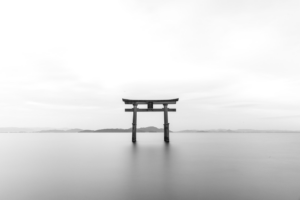
7 Beautiful Temples And Shrines In Okinawa
Are you planning a trip to Okinawa and looking for some spiritual and cultural experiences? Look no further than the beautiful temples and shrines scattered throughout the islands. From ancient sites steeped in history to modern museums showcasing Okinawan traditions, there’s plenty to explore.

7 Day Trips To Okinawa’s Surrounding Islands
Are you looking for a new adventure? Look no further than Okinawa’s surrounding islands. With crystal clear waters, stunning beaches, and unique cultural experiences, these islands are the perfect destination for a day trip. Whether you’re an avid beach-goer, history buff, or just looking

7 Hidden Gems In Okinawa Off The Beaten Path
Are you tired of the crowds and tourist traps in Okinawa? Do you crave a more authentic travel experience, away from the well-trodden path? Then look no further than these seven hidden gems, waiting to be discovered by adventurous travelers like you. From a

7 Parks And Nature Reserves In Okinawa For Relaxation
Are you looking for a peaceful escape from the hustle and bustle of city life? Look no further than Okinawa, Japan’s southernmost prefecture. With its crystal-clear waters, stunning beaches, and lush greenery, Okinawa is the perfect place to unwind and reconnect with nature. In
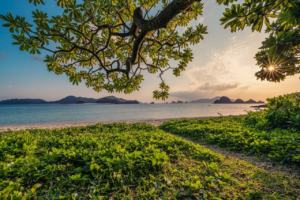
8 Instagram-Worthy Spots In Okinawa
If you’re planning a trip to Okinawa, Japan, you’ll want to make sure you visit some of the most Instagram-worthy spots on the island. From stunning natural landscapes to historical landmarks and modern attractions, Okinawa has it all. In this article, we’ll take you
7 Unique Experiences To Have In Okinawa
Are you ready to embark on a journey to the tropical paradise of Okinawa? This Japanese prefecture boasts crystal clear waters, rich cultural heritage, and a unique blend of Japanese and Ryukyuan traditions. With so many experiences to choose from, it can be overwhelming

10 Offbeat Experiences In Okinawa For Adventurous Travelers
Are you an adventurous traveler looking for unique experiences in Okinawa? Look no further! This stunning island in Japan offers a plethora of offbeat experiences that will take your breath away. From secret beaches and coves to underground caves, Okinawa has something for everyone.

A Guide To Okinawa’s Festivals And Cultural Events
Are you planning a trip to Okinawa and want to experience the rich cultural traditions and festivals the island has to offer? Look no further than this guide to Okinawa’s festivals and cultural events. From the Naha Tug-of-War Festival to the Okinawa Churaumi Aquarium
10 Must-Visit Attractions In Okinawa
Are you planning a trip to Okinawa? You’re in for a treat! This beautiful prefecture in Japan is packed with amazing attractions and activities that will keep you entertained throughout your stay. From historical landmarks to natural wonders, Okinawa has something for everyone. In

A Guide To Okinawa’s Beautiful Beaches: Sun, Sand, And Sea
Are you dreaming of a tropical paradise? Look no further than Okinawa, Japan’s southernmost prefecture. With over 160 islands, you’ll find plenty of stunning beaches to explore. From the crystal-clear waters to the soft white sand, Okinawa’s beaches are the perfect destination for a
A Review Of The Best Okinawan Cuisine: Savoring Local Flavors
Welcome to Okinawa, a place where local cuisine is a reflection of its rich history and cultural influences. From the sweet and savory dishes to the fresh seafood delicacies, Okinawan cuisine is a feast for the senses. As you embark on your culinary journey
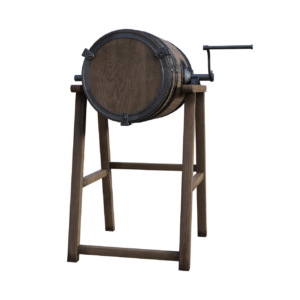
A Review Of The Best Awamori Distilleries In Okinawa
Are you a fan of Japanese spirits and looking to explore something new? Look no further than Awamori, a traditional Okinawan distilled beverage with a rich history and unique flavor profile. Okinawa is the birthplace of Awamori, and boasts dozens of distilleries producing this
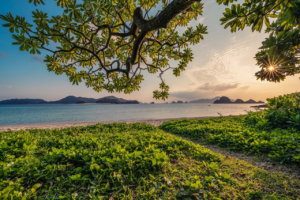
A Guide To Okinawa’s Local Dishes: From Rafute To Taco Rice
If you’re a foodie looking for a new culinary adventure, Okinawa is the place to be. This beautiful island in Japan is known for its vibrant culture and unique cuisine. From the famous pork belly dish, Rafute, to the fusion creation of Taco Rice,
Exploring Okinawa On A Budget: 5 Money-Saving Tips
Are you dreaming of exploring the beautiful beaches and rich culture of Okinawa, but worried about breaking the bank? Fear not, because with these 5 money-saving tips, you can experience all that Okinawa has to offer without sacrificing your budget. Firstly, planning your trip
Exploring Okinawa’s Traditional Villages: Preserving Local Heritage
Are you interested in immersing yourself in the rich cultural heritage of Okinawa? Then exploring the traditional villages of this Japanese prefecture is a must-do on your list. These villages are home to the Ryukyu people, who have a unique culture that has been

Okinawa By Bike: Exploring The Islands On Two Wheels
Are you looking for an adventurous and unique way to explore the beautiful islands of Okinawa? Why not try cycling? With its stunning coastal roads, picturesque countryside, and laid-back island culture, Okinawa is a perfect destination for a cycling vacation. Not only is cycling

Okinawa For Beach Lovers: Sun, Surf, And Relaxation
If you’re a beach lover, you won’t find a better destination than Okinawa. This Japanese prefecture, located south of the mainland, is known for its pristine beaches, crystal-clear waters, and stunning coral reefs. Whether you’re looking for a peaceful retreat or an adventure-packed vacation,
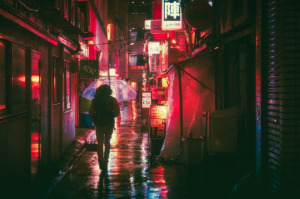
Okinawa Street Food: Tasty Bites And Snacks
Are you ready to explore the diverse and delicious street food of Okinawa? From savory dishes to sweet treats, the streets of Okinawa are brimming with tempting bites and snacks that are sure to satisfy your taste buds. Whether you’re a foodie or just

Okinawa Transportation Guide: Getting Around With Ease
Are you planning a trip to Okinawa and wondering how to get around the island with ease? Look no further than this comprehensive transportation guide. Okinawa has a variety of options for getting around, from renting a car to taking the bus, riding the
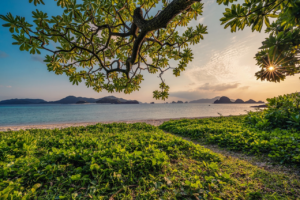
Okinawa Travel Guide: Tips For Exploring The Tropical Paradise
Welcome to Okinawa, a tropical paradise located in the southernmost part of Japan. With its crystal-clear waters, white sand beaches, and unique culture, Okinawa has become a popular destination for travelers seeking a different kind of experience. Whether you’re a beach lover, a history
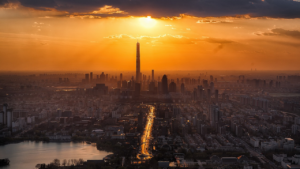
Okinawa Vs. Tokyo: Contrasting Urban Landscapes
Are you curious about the differences between the urban landscapes of Tokyo and Okinawa? Tokyo, the bustling capital city of Japan, is known for its towering skyscrapers, neon lights, and crowded streets. When it comes to architecture and city planning, Tokyo is a city

Okinawa’s Art And Culture: Museums And Galleries
Are you interested in exploring the vibrant art and culture of Okinawa? Look no further than the museums and galleries scattered throughout the island. From traditional pottery and textiles to contemporary art exhibitions, Okinawa offers a diverse range of artistic experiences. One of the

Okinawa’s Best Museums: History, Art, And Maritime Heritage
If you’re looking for a unique blend of history, art, and maritime heritage, Okinawa is the perfect destination for you. This Japanese prefecture, located on a chain of islands in the southern part of the country, boasts a rich cultural heritage that is reflected

Okinawa With Kids: Family-Friendly Activities And Attractions
Are you planning a family vacation to Okinawa, Japan? With its beautiful beaches, unique culture, and family-friendly attractions, Okinawa is the perfect destination for a memorable trip with your kids. There are endless activities and attractions that will keep the whole family entertained. Firstly,
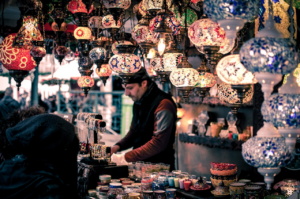
Okinawa’s Best Souvenir Shops: Take Home A Piece Of Paradise
Are you planning a trip to Okinawa and looking for the perfect souvenir to take home with you? Look no further! Okinawa is home to a variety of unique and beautiful souvenir shops that offer a vast array of traditional and modern gifts that
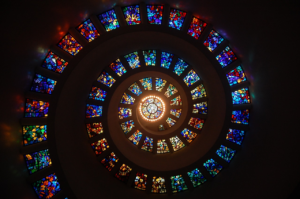
Okinawa’s Best Ramen Shops: Noodles With A Tropical Twist
Are you craving a steaming bowl of delicious ramen while enjoying the tropical paradise of Okinawa? Look no further than these top ramen shops for a unique culinary experience. Hidakaya is a must-visit spot for anyone looking for a hearty bowl of ramen. Their

Okinawa’s Hidden Beaches: Secluded Paradise Getaways
Looking for an escape from the hustle and bustle of city life? Look no further than Okinawa’s hidden beaches. With crystal-clear waters and soft white sand, these secluded paradise getaways offer the perfect retreat for those seeking relaxation and tranquility. From Yonaguni Island in
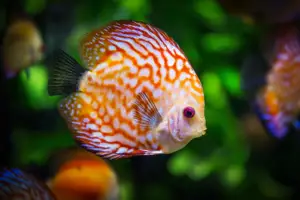
Okinawa’s Churaumi Aquarium: A Marine
Welcome to Okinawa’s Churaumi Aquarium, a world-class facility that showcases the beauty and diversity of the ocean’s ecosystems. As a visitor, you will have the opportunity to explore some of the most stunning and fascinating marine environments on the planet, from shallow coral reefs

Okinawa’s Historical Sites: Discovering Ryukyuan Culture
Are you looking for a cultural experience that takes you back in time? Look no further than Okinawa, where you can discover the rich history and culture of the Ryukyuan people. This island prefecture in southern Japan was once the independent kingdom of Ryukyu,

Okinawa’s Culinary Delights: From Sushi To Goya Champuru
Welcome to Okinawa, where the culinary scene is as vibrant and diverse as the island’s culture and history. From traditional dishes that have been passed down for generations to fusion cuisine that reflects the island’s unique blend of cultures, Okinawan food is a must-try
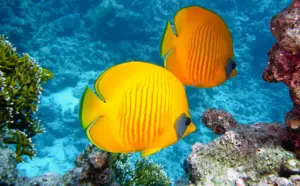
The Battle Of Okinawa’s Coral Reefs: Miyako Islands Vs. Ishigaki Island
You may have heard of the Battle of Okinawa, one of the bloodiest conflicts of World War II that took place in 1945. But did you know that this battle also had a significant impact on the coral reefs surrounding the Miyako and Ishigaki

Okinawa’s Shuri Castle: A Glimpse Into Ryukyuan History
You stand before the impressive Shuri Castle in Okinawa, Japan, a UNESCO World Heritage site and a glimpse into the rich history of the Ryukyu Kingdom. As you step onto the grounds, you are transported back in time to the 15th century when the
The Ultimate Okinawa Itinerary: 5 Days Of Island Adventures
You’re in for an adventure of a lifetime with The Ultimate Okinawa Itinerary: 5 Days of Island Adventures. This paradise is located in the southern part of Japan and boasts a unique culture, cuisine, and natural wonders that will leave you in awe. With

Okinawa’s Nightlife: Bars, Clubs, And Live Music
Are you ready to experience the vibrant nightlife of Okinawa? From bustling bars to underground clubs and live music venues, Okinawa offers a diverse range of options for those looking to let loose after dark. Whether you’re a local or a tourist, you’ll find
The Ultimate Showdown: Naha Vs. Ishigaki – Which Okinawan City Should You Visit?
Are you planning a trip to Okinawa but can’t decide which city to visit? Allow us to present the ultimate showdown: Naha vs. Ishigaki. These two cities offer vastly different experiences, so it ultimately depends on what you’re looking for in your trip. Naha,

5 Captivating Winter Festivals In Japan For Snowy Delights
Japan is renowned for its winter festivals that showcase its rich cultural heritage and breathtaking snowy landscapes. These festivals are a perfect opportunity to experience the beauty of winter in Japan while indulging in the country’s unique traditions, food, and entertainment. From the famous

5 Festival Parades In Japan For Colorful Processions
Japan is a country that is deeply rooted in traditional cultures and customs. One of the most prominent cultural practices in Japan is the celebration of festivals. Festivals in Japan are usually associated with processions, where locals parade through the streets in colorful costumes
5 Not-To-Be-Missed Fireworks Displays In Japan
Japan is known for its stunning fireworks displays that draw visitors from around the world. These displays are a celebration of Japan’s rich history and culture, and are often accompanied by traditional music and dance performances. From small town festivals to national competitions, there
7 Exciting Street Festivals In Japan For Colorful Celebrations
Japan is a country that is rich in culture and tradition, and this is evident in the numerous festivals that are celebrated throughout the year. These festivals are an integral part of the Japanese way of life, and they provide an opportunity for locals
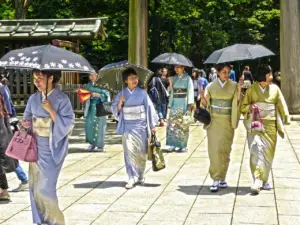
7 Cultural Festivals In Tokyo: Showcasing Diversity And Tradition
Tokyo, Japan’s bustling capital city, is a vibrant hub of culture, tradition, and innovation. From its towering skyscrapers to its quaint temples, Tokyo offers a unique blend of old and new, blending ancient customs with modern technology. One of the best ways to experience

5 Unique Festivals In Hokkaido: Winter Wonder And Natural Beauty
Hokkaido, the northernmost island of Japan, is known for its stunning natural beauty and unique winter festivals. The island experiences heavy snowfall during the winter months, which creates a winter wonderland that is unlike any other. Hokkaido’s winter festivals are a celebration of this

7 Historic Festivals In Japan: Preserving Tradition And Heritage
Japan is a country steeped in rich cultural traditions and heritage, and one of the best ways to experience and appreciate them is through its many festivals. These festivals, some of which date back hundreds of years, are a testament to the Japanese people’s

7 Traditional Arts And Crafts Festivals In Japan: Masterpieces In The Making
Japan is a country known for its rich cultural heritage that encompasses traditional arts and crafts. These cultural forms have been preserved over centuries and are still celebrated today through various festivals and events. The country’s festivals offer a unique opportunity to witness these

7 Festivals In Kyoto: Ancient Traditions In The Modern Era
Kyoto, the ancient capital of Japan, is a city steeped in rich cultural traditions and history. One of the most fascinating aspects of this city is the vibrant festival culture that has been celebrated for centuries. These festivals are deeply rooted in the city’s
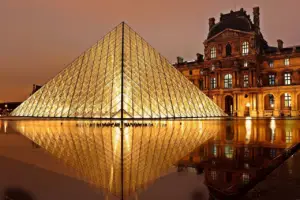
7 Spectacular Flower Illuminations In Japan: Blossoms In Lights
Japan is a country that is known for its vibrant and colorful festivals that showcase the country’s rich cultural heritage. One of the most popular festivals in Japan is the Hanami, which celebrates the blooming of cherry blossoms in spring. During this season, the

10 Quirky Festivals In Japan For Offbeat Fun
Japan is known for its rich cultural heritage, picturesque landscapes, and advanced technology. However, the country is also home to some of the quirkiest and most unique festivals in the world. These festivals are a celebration of Japan’s distinct culture and offer a glimpse
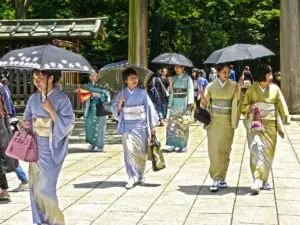
8 Cultural Festivals In Japan For A Glimpse Into Local Life
Japan is a country that is steeped in rich cultural heritage and traditions, and what better way to experience them than through the lens of its festivals? These celebrations offer a glimpse into the local life and customs of the Japanese people, making them

7 Unique Cultural Festivals To Experience In Japan
Japan is renowned for its rich cultural heritage, which is reflected in its numerous festivals and ceremonies. These events are celebrated throughout the year and provide an opportunity for locals and visitors to experience the country’s unique traditions, customs, and beliefs. From the vibrant
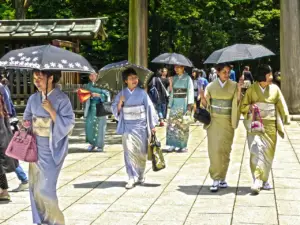
10 Spiritual Festivals In Japan For Sacred Celebrations
Japan is a country steeped in ancient traditions and rich cultural heritage. Among its many treasures are spiritual festivals that have been celebrated for centuries. These festivals are deeply rooted in Japan’s religious and cultural history and are an important part of the country’s
Latest Posts
5 essential tips for traveling to tokyo on a budget, 10 unique experiences you can only have in tokyo, a comprehensive guide: traveling to tokyo – everything you need to know, a guide to tokyo’s cat cafés: a feline lover’s haven, a foodie’s paradise: exploring tokyo’s culinary scene, all traveling sites.
- Discovering Taiwan
- Discovering Hong Kong
- Discovering Japan
- Discovering Tasmania
- Scout Dubai
All Rights Reserved discoveringjp.com
- Skip to primary navigation
- Skip to main content
- Skip to primary sidebar
- Skip to footer
TravelAwaits
Our mission is to serve the 50+ traveler who's ready to cross a few items off their bucket list.
7 Must-See Things In Hiroshima’s Peace Memorial Park

Teresa Otto
- Activities and Interests
- Destinations
- History and Culture
Japan is one of my favorite countries to visit. It is culturally rich and extraordinarily beautiful. I often traveled with my mom. Japan was one of her favorites, too, in part because of the respect and kindness she felt while there.
We had been to Tokyo and Kyoto — both must-sees and absolutely stunning not only during cherry blossom time but also in the autumn. Later, we visited Nagano and Jigokudani snow monkey park — a mile-long walk to the hot springs that my 88-year-old mom nailed.
When it came to visiting Hiroshima, my mom said no thanks. She’d lived through World War II and wasn’t interested in reliving it. I must admit, it wasn’t top on my list either, but it was a must-see for a fellow traveler in our group. I was reluctant to see the pain and to experience the emotions a place like this evokes. But just as Japanese tourists visit Pearl Harbor, seeking an American perspective, Mark and I caught a train in Kyoto and made our way to Hiroshima’s Peace Memorial Park to learn about the day that changed history.
Hiroshima’s Peace Memorial Park is located in what was once a busy commercial district. Only one original building, Genbaku Dome or A-Bomb Dome, still stands. Architect Kenzo Tange designed the park to be a tranquil place for reflection and remembrance with 300 cherry trees, quiet walking paths, and memorials to the bombings’ victims. Seventy-five years later, these seven must-see things in Hiroshima’s Peace Park show visitors the devastation, the lives cut short, and the pain survivors endured — lest we forget.
1. Atomic Bomb Dome
Taking tram line 2 or 6 from Hiroshima’s main train station and getting off at Genbaku Dome-mae stop, you’ll be at Hiroshima’s Peace Memorial Park’s entrance and steps away from the skeletal remains of this 1915 building and its dome. The building is 530 feet from the hypocenter of the bomb. Before it was bombed on August 6, 1945, the building was a commercial exhibition hall until Japan became embroiled in World War II, and it was taken over for government use. The interior was decimated, as were all of the workers. The damaged brick walls and dome’s steel frame remain and are the only remnants left from the day the bomb was dropped. It was designated a UNESCO World Heritage Site in 1996. It has remained unchanged and is a lasting reminder of the destruction of war and the A-bomb in particular.
The remainder of the peace park is on an island accessed by walking over the Motoyasu-bashi Bridge. On your way to the bridge, you’ll see several monuments, including tributes to the workers who died in the Genbaku Dome and to the Mobilized Students, who supported the war effort. Japan enlisted the service of middle and high school students to build munitions and work in factories. Of the 8,400 middle and high school students in Hiroshima in 1945, 6,300 died during the bombing. This is their monument.

2. Children’s Peace Monument
Another monument to children is the first monument you’ll see after crossing the Motoyasu-bashi Bridge. The Children’s Peace Monument pays homage to the young victims of the bombing with a sculpture of Sadako Sasaki holding a metal crane as she stands atop a giant concrete bell. Sasaki folded origami cranes while battling leukemia that resulted from radiation exposure. She hoped to fold 1,000 cranes and be granted a wish. She died at age 12.
Today, display cases overflow with vibrant origami cranes made by children all over the world.

Conchi Martinez / Shutterstock
3. The Peace Bell
While more subdued than Genbaku Dome and the Children’s Peace Monument, the Peace Bell is full of symbolism. A group of bombing survivors built the bell in 1964 to promote a world without nuclear weapons and war. The bell itself is embossed with a world map without any borders at all.
Where the log strikes the bell, you’ll see the atomic energy symbol. The opposite side has a mirror to reflect the heart of the person striking the bell. The symbolism continues in the surrounding pond that’s filled with lotus plants. Survivors used lotus leaves to ease the pain from their burns.
For photographers, the Peace Bell platform offers a unique view of the Genbaku Dome across the Motoyasu-bashi River.

4. Atomic Bomb Memorial Mound
Called the “Grave of Hiroshima,” the mound, 52 feet in diameter and 11.5 feet high, holds the cremated remains of more than 70,000 people. The vast majority are unidentified. For the 817 of them who were identified, no one ever claimed their remains.
Before the bombing, a Buddhist temple stood where the mound is now. In the days after the bombing, a temporary crematorium — one of many in the city — occupied this spot. On the first anniversary of the bombing, the city remembered the victims and placed their remains in the underground vault. Remains continue to be interred there.

5. Cenotaph For A-Bomb Victims
Several memorials occupy the center of the park — the Flame of Peace, the Pond of Peace, and the Cenotaph. Designed in 1952 by Kenzo Tange, the architect who designed the park, the simple concrete and granite arch replicates the shape of an ancient Japanese clay house and protects the souls whose names are recorded in books stored here.
The cenotaph’s arch frames Genbaku Dome in the distance, with the peace flame and pond in the foreground. Its inscription reads, “Let all the souls here rest in peace, for we shall not repeat the evil.”
As of August 6, 2016, victims’ names fill 110 volumes of books. One additional volume simply states, “Many victims with their names unknown.”

6. Hiroshima National Peace Memorial Hall
The newest of memorials in the park allows for quiet reflection in the Prayer Hall. A gently sloped walkway gives way to the area’s modest fountain surrounded by a 140,000-tile mural of Hiroshima’s cityscape with one tile for each victim of the bombing — whether they died immediately or later as a result of their injuries or the effects of radiation.
The Memorial Hall also displays victims’ names and photographs in the Victims’ Information Area. Exhibits include video testimonies from victims and excerpts from their memoirs read in both Japanese and English.
7. Hiroshima Peace Memorial Museum
The museum is thought-provoking, sobering, heartbreaking, but an absolute must-see. Everything that led up to the bombing and its aftermath is portrayed here. The unbiased displays run the gamut from photographs of the devastation to a charred lunch box and tricycle. With a focus on education and not repeating the mistakes of the past, exhibit placards are in Japanese and English.
Take a few moments to listen to first-person accounts of the bombing that immediately killed 80,000 of Hiroshima’s residents and injured 35,000. These videos are particularly powerful.
Like the rest of the park, the museum is ADA accessible. While public parking isn’t available in the park, a parking lot for visitors with accessibility issues is located near the museum. For more information and for assistance during your visit, review the museum’s website .
If your time to visit the park is limited, make the museum a priority. Allow about 2 hours for your visit to the museum and a half-day for the entire park to see the other monuments and the Memorial Hall. Walking from place to place is easy, with places to sit along the way.
For the rest of your day, I recommend a trip to Miyajima or Shrine Island to see Itsukushima Shrine and its iconic torii gate. It’s easiest to reach the island via a 45-minute boat ride from the peace park. Along with the massive poppy-colored gate that “floats” in the Sea of Japan at high tide, this tiny island is packed with temples, shrines, and bold deer that eat out of your hand. All will help lift your heavy heart.
Related articles:
- How I Traced My Family’s World War II History
- 7 World War II Sites To Visit In Bastogne, Belgium
- 11 World War II Sites To Visit In France

Teresa Otto, a retired pediatric anesthesiologist, now photographs and writes about her travels. When she’s not traveling the world, she serves as a waitress and housekeeper for two rescued cats and a dog in The Woodlands, Texas. Follow her travels on Instagram and on her personal website .
- Destinations
How to Visit HIROSHIMA and MIYAJIMA in ONE DAY (3 Easy Steps Guide)
This site uses affiliate links, meaning that if you make a purchase through our links, we may earn an affiliate commission.
Hiroshima and Miyajima are both iconic destinations, steeped in ancient history as well as recent history, plus both places are filled with delicious food options.
I often get asked if it is possible to do Hiroshima and Miyajima in one day. The answer is YES! However, some advance planning is necessary.
So, here is your step-by-step guide to how to visit Hiroshima and Miyajima in one day.
Check Out These Helpful Posts About Hiroshima:
10 Amazing Things You Can’t Miss on Your First Visit to Hiroshima
Perfect Day Trip to Miyajima from Kyoto, Osaka, or Hiroshima
Perfect One Day in Hiroshima (5 Things You Can’t Miss+Useful Tips)
Hiroshima Peace Memorial Park Self-Guided Walking Tour (8 Easy Steps)
You Might Also Like:
Amazing 3 DAYS in TOKYO (Thrilling Itinerary with 21 Stops)
Ultimate 16-DAY JAPAN ITINERARY for Marvelous Culture, History, and Nature
- 1. How to Get to Hiroshima from Kyoto or Osaka
- 2. How to Get to Miyajima from Hiroshima
- 3. What to Do in Hiroshima (3 Places You Need to Visit)
- 3.1. Atomic Bomb Dome
- 3.2. Hiroshima Peace Memorial Park
- 3.3. Hiroshima Peace Memorial Museum
- 4. What to Do in Miyajima (3 Places You Need to Visit)
- 4.1. Miyajima Island Floating Torii
- 4.2. Itsukushima Shrine
- 4.3. The Ropeway
- 5. Intrepid Scout's Tips for How to Visit Hiroshima and Miyajima in One Day
Before we dive into how to visit Hiroshima and Miyajima in one day , my recommendation is to start your day in Hiroshima and then continue to Miyajima .
It makes more sense logistically to do it that way. You will be more efficient and save time during the day and you will be able to accomplish more!
How to Get to Hiroshima from Kyoto or Osaka
- How to Get to Hiroshima from Kyoto
Kyoto Station and Hiroshima Station are connected by the Tokaido and Sanyo Shinkansen lines. Both lines will take you directly from Kyoto to Hiroshima.
The journey will take about 1 hour and 40 minutes. You can use your JR Pass . In addition, The Nozomi Shinkansen trains only take 1 hour 15 minutes but are not covered by the pass.
- How to Get to Hiroshima from Osaka
Shin-Osaka Station and Hiroshima Station are connected by a bullet train – Sanyo Shinkansen Line. Journey times vary according to the model of the train.
The faster models like the Mizuho and the Nozomi take just 1 hour and 25 minutes, however, they are not covered by the JR Pass.
The fastest train covered by the JR Pass is the Sakura train which takes 1 hour 32 minutes.
- How to Get to Miyajima from Hiroshima
Trains from Hiroshima Station depart every 15 minutes for Miyajima. You are going to exit the train once you reach Miyajimaguchi Station .
It is about a 30-minute ride from Hiroshima to Miyajimaguchi Station. Once you arrive at Miyajimaguchi Station, follow the signs for the Miyajima Island ferry .
The ferry is no more than a 10-minute walk from the Miyajimaguchi Station. Both, the train and the ferry are covered by the JR Pass .
What to Do in Hiroshima (3 Places You Need to Visit)
There is a lot to do in Hiroshima and you can spend at least 2 days exploring this fascinating place. If you have more time for Hiroshima then make sure not to miss these helpful posts:
However, if you only have a few hours to spend in Hiroshima then here are my 3 top places that you need to put on your list :
Atomic Bomb Dome
Atomic Bomb Dome should be one of the first things to do in Hiroshima. It is an iconic symbol of the “peace city” of Hiroshima. Atomic
- Bomb Dome is also called A-Bomb Dome, Genbaku Dome, or the Hiroshima Peace Memorial. It is part of the Hiroshima Peace Memorial Park.
- Hiroshima Peace Memorial Park serves as a memorial to people killed in the atomic bombing of Hiroshima on August 6th, 1945.
- Originally, Atomic Bomb Dome was the Hiroshima Prefectural Industrial Promotion Hall. It housed national and municipal governmental offices.
- The building was located just 160 meters from the epicenter of the blast . Amazingly, it was one of the few structures in the area to remain upright after the explosion.
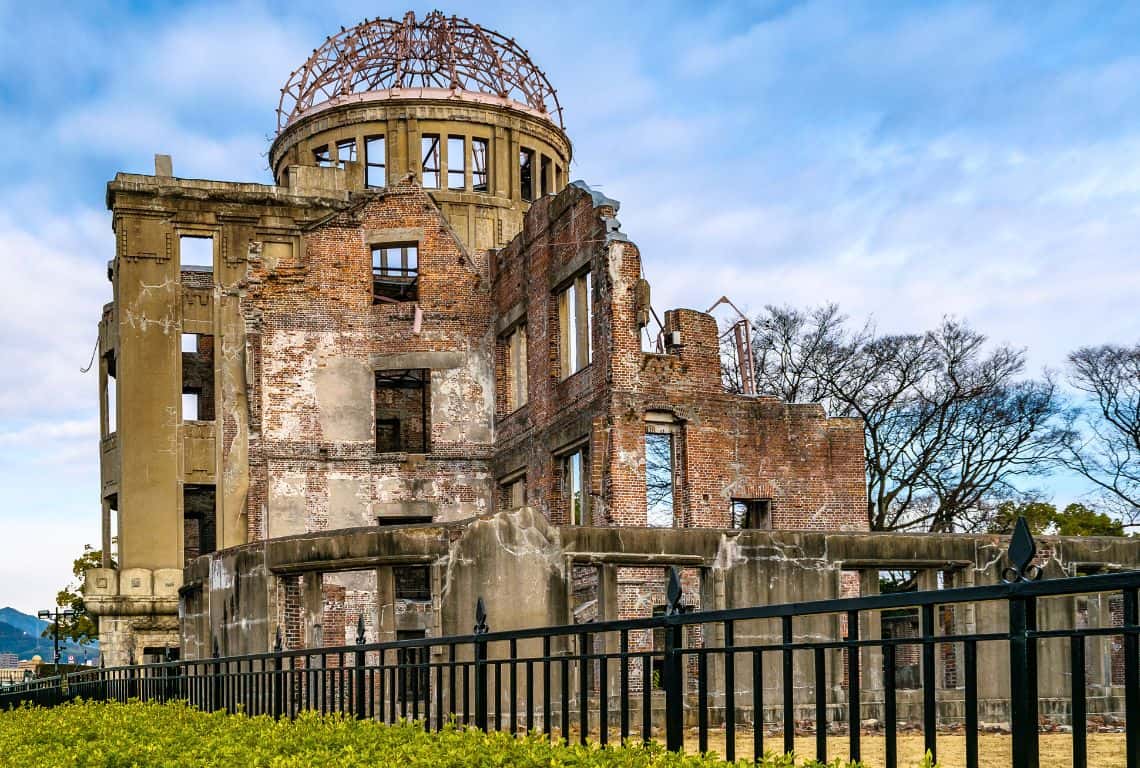
Atomic Bomb Dome / How to Visit Hiroshima and Miyajima in One Day
Hiroshima Peace Memorial Park
Hiroshima Peace Memorial Park was designed by Japanese architect Kenzo Tange. It opened to the public in 1954. The park has a total area of 122,000 square meters and houses a museum, as well as numerous memorials and monuments commemorating the people who perished during the atomic bombing of Hiroshima on August 6th, 1945.
Here are a couple of memorials and monuments that you should stop by:
- Children’s Peace Monument
Children’s Peace Monument is a tribute to Sadako Sasaki and all the children who perished due to the atomic explosion.
Sadako was exposed to the A-bomb at the age of two. Yet, she grew into a strong and healthy girl. However, nine years after exposure to the atomic bomb radiation, she developed leukemia.
Based on a traditional Japanese belief, Sadako thought that if she folded 1,000 origami cranes she would recover. But, after an eight-month battle with the disease, she passed away.
Cenotaph, also known as the Memorial Monument for Hiroshima for the A-bomb Victims is located in the center of the park. It consists of a stone coffer beneath an arch. Within the coffer is a record of the names of victims of the atomic bombing.
Cenotaph is inscribed with the phrase: “Let all the souls here rest in peace for we shall not repeat the evil.”
If you are planning to spend a few more hours in Hiroshima Peace Memorial Park or want to learn more about the events leading to the bombing of Hiroshima then read Hiroshima Peace Memorial Park Self-Guided Walking Tour (in 8 Easy Steps) .
Cenotaph for the A-Bomb Victims / How to Visit Hiroshima and Miyajima in One Day
Hiroshima Peace Memorial Museum
Hiroshima Peace Memorial Museum was built by the city of Hiroshima and it was opened to the public in 1950.
The museum collects materials that convey the horror of Hiroshima’s atomic bombing. It displays artifacts, photographs, and paintings that show Hiroshima before and after the bombing.
It demonstrates the present and current status of the nuclear age.
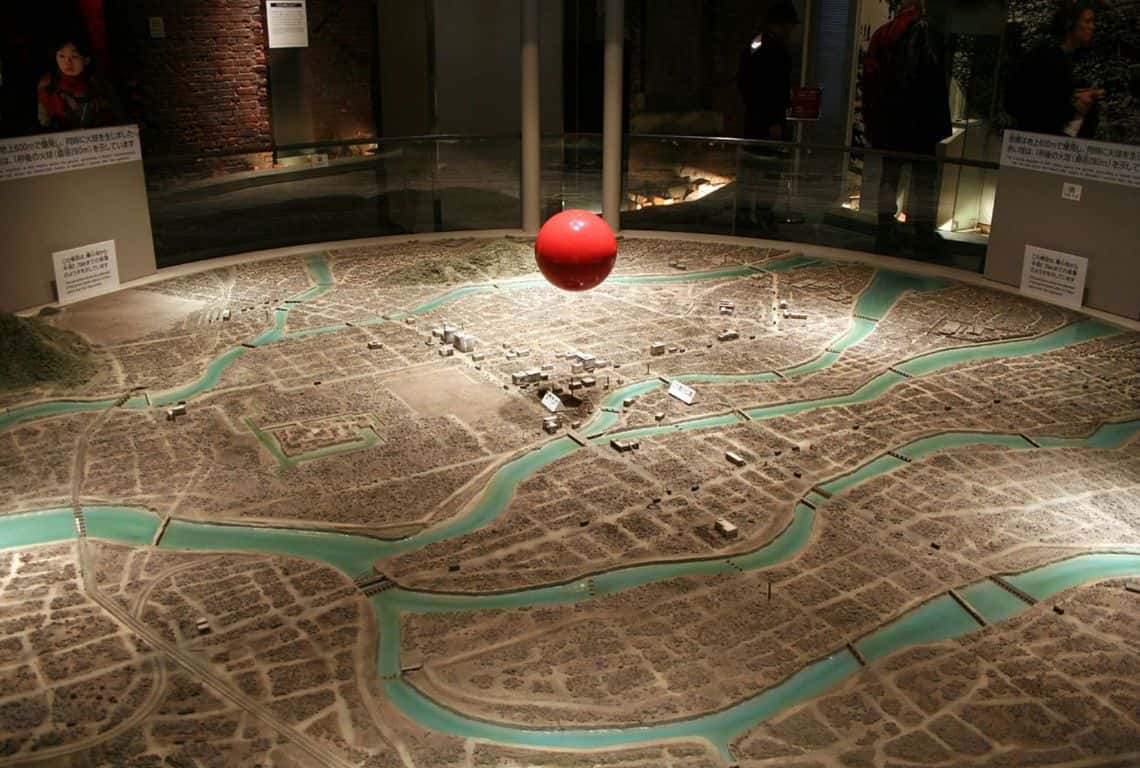
Image Credit: Derek Springer via Wikimedia Commons / How to Visit Hiroshima and Miyajima in One Day
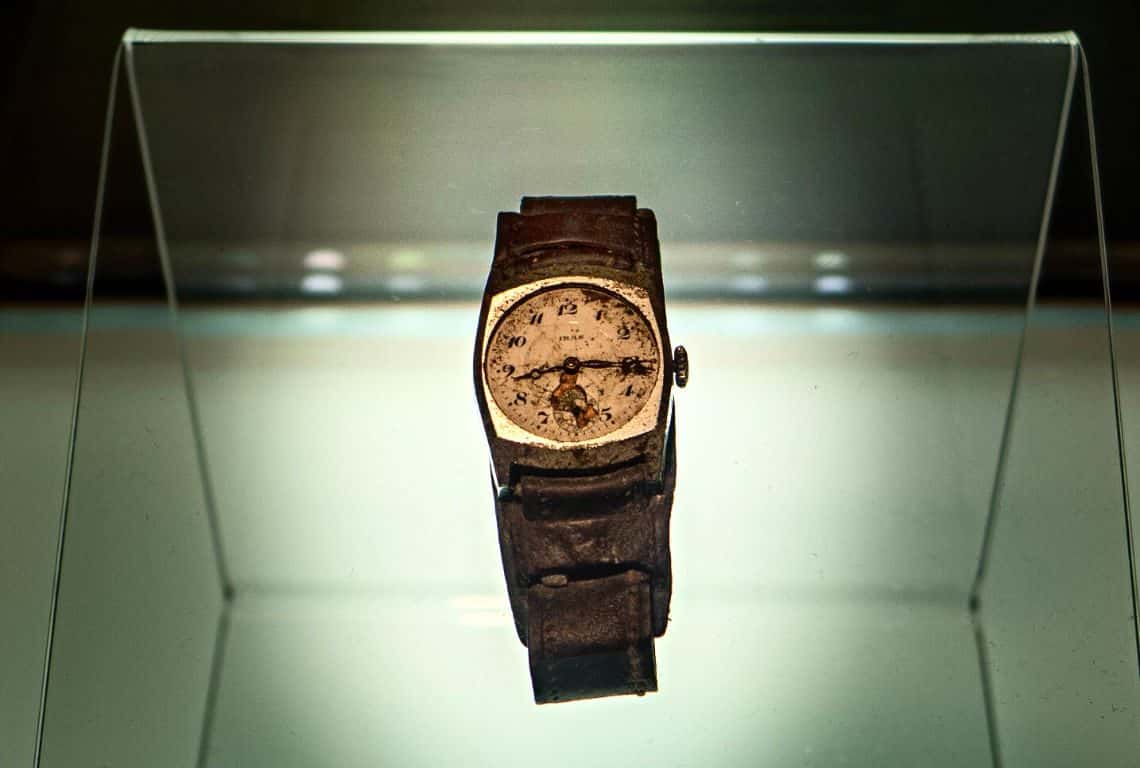
Hiroshima Peace Memorial Museum / How to Visit Hiroshima and Miyajima in One Day
What to Do in Miyajima (3 Places You Need to Visit)
I love Miyajima Island and going to Miyajima is one of my favorite day trips from Hiroshima .
Needless to say, you can easily spend a day exploring the island. In addition, consider spending a least one night on the island. Make sure to read Day Trip to Miyajima from Kyoto, Osaka, or Hiroshima .
Here are my top 3 places you need to visit on Miyajima Island:
Miyajima Island Floating Torii
The number one attraction as well as the symbol of Miyajima Island is a Giant Torii (gate). During the high tide , it appears as if the torii is floating out in the sea.
If you are visiting the island during the low tide , you can walk up all the way to the torii and really get the feel of how enormous this structure is.
Interestingly enough, unlike the traditional torii, which consist of two pillars, the Miyajima Island Giant Torii has additional four supporting pillars. All in all, it weighs about 60 tons and stands almost 17 meters high.
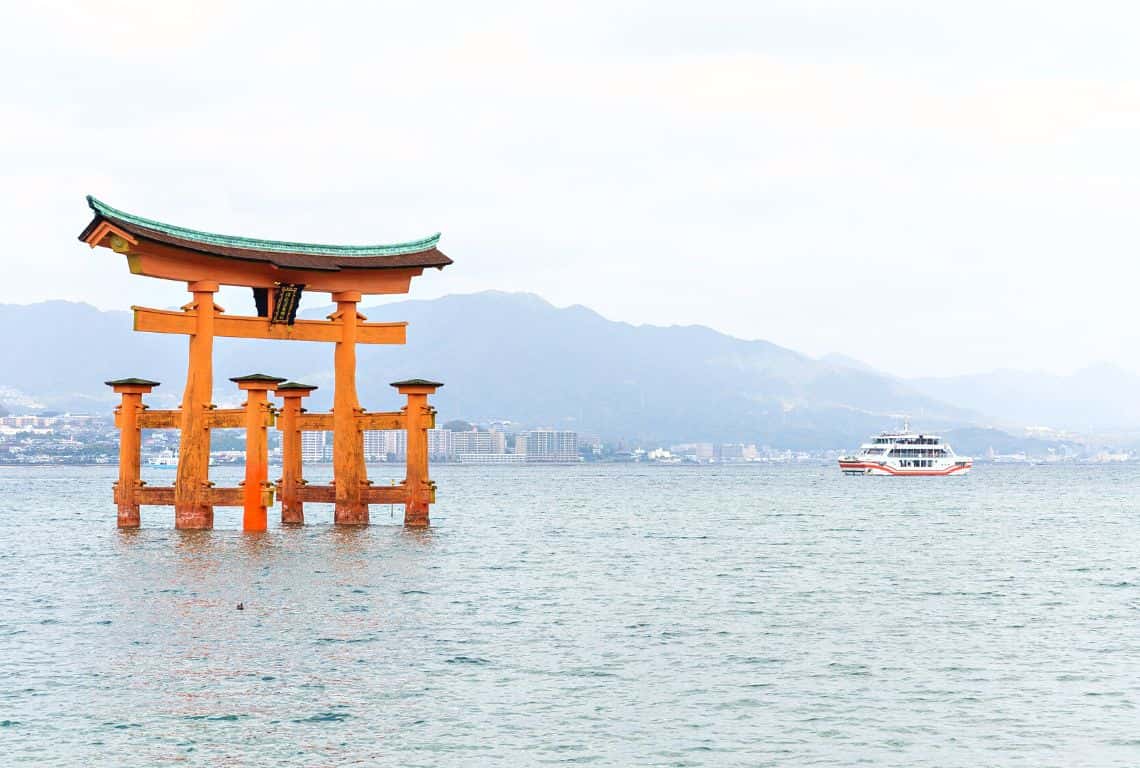
Miyajima Island Floating Giant Torii / How to Visit Hiroshima and Miyajima in One Day
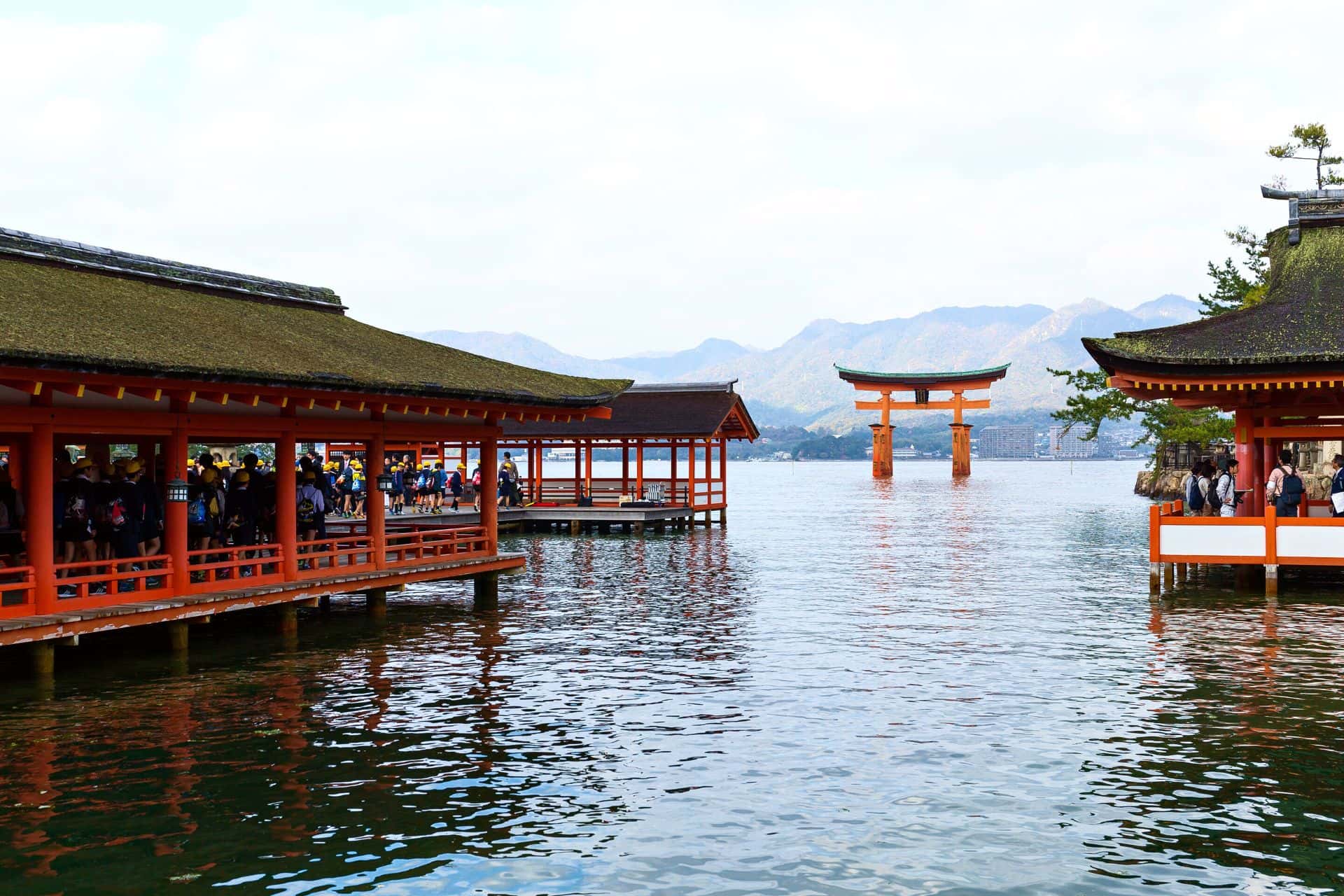
Itsukushima Shrine
Next, head on to Itsukushima Shrine .
The shrine was built in 593 and became an important place of worship in about 1168. In 1996 the World Heritage Committee officially inscribed Itsukushima Shinto Shrine as a World Cultural Heritage.
Itsukushima Shrine is well known for its unique construction. It consists of four main areas:
- the Holy Hall where the gods live (Heiden)
- the inner part where only the priests enter (Haiden)
- the external area for worship (Haraiden)
- the noh theater stage
All the sections are connected by numerous boardwalks and supported by pillars above the sea. During the high tide, the shrine looks as if it is floating in the Seto Sea .
Interestingly enough, the reason why the shrine was built out in the sea was that the island was originally thought to be too sacred for commoners to set foot upon.
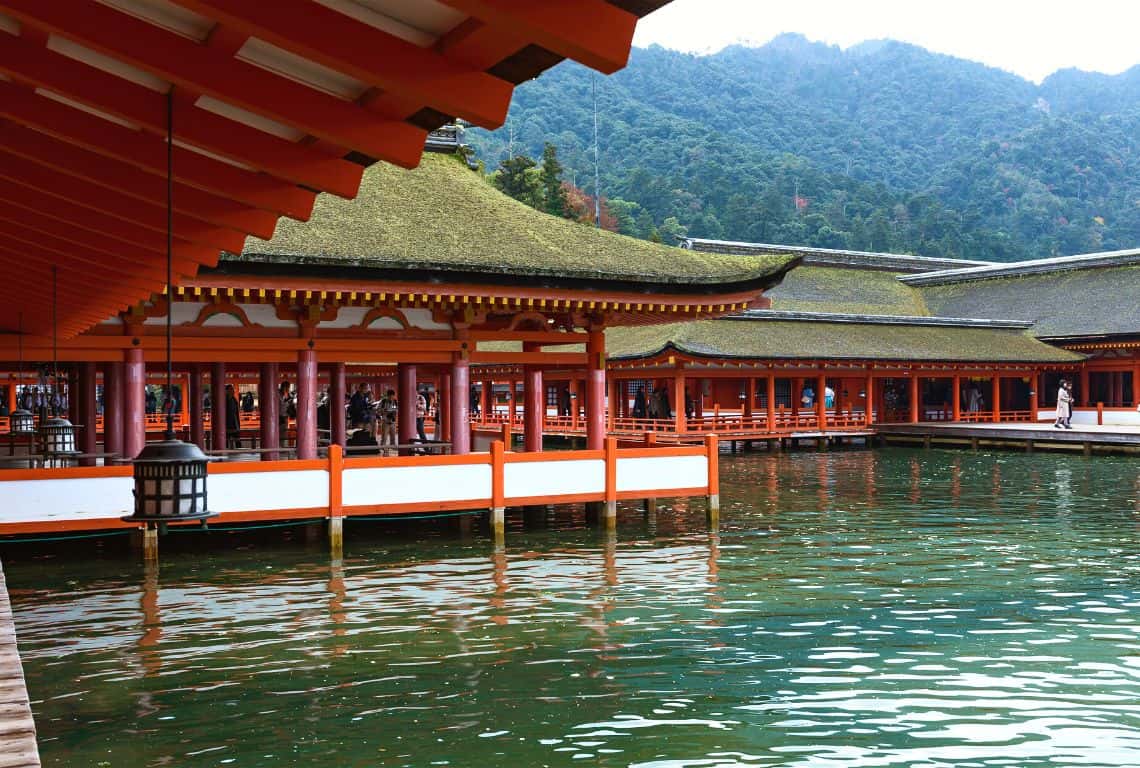
Itsukushima Shrine / How to Visit Hiroshima and Miyajima in One Day
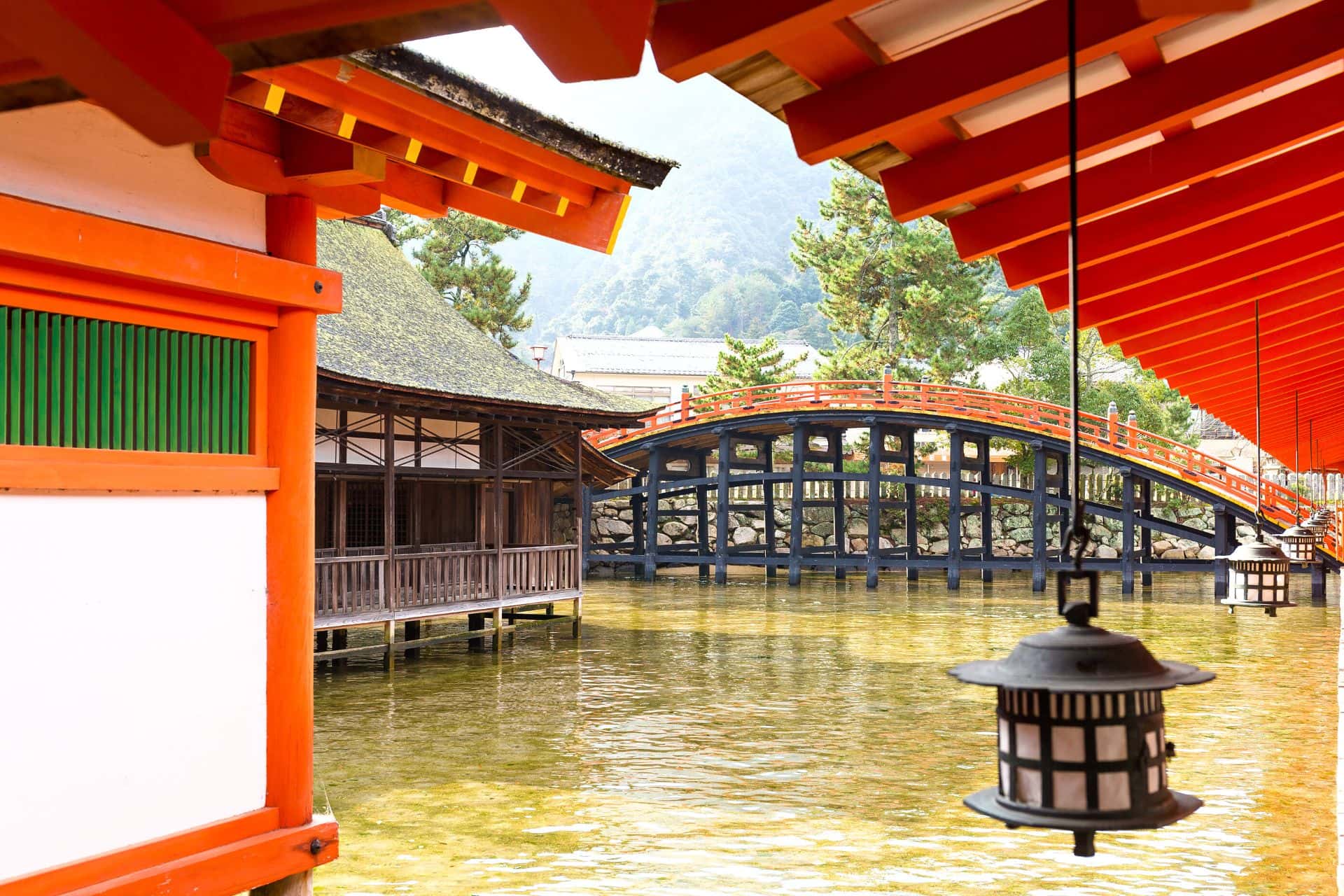
The Ropeway
Next, take the ropeway to catch the magnificent views of the island.
- The ropeway leaves from Momijidani Station . You can take a bus or you can walk to the station. My recommendation is to walk to Momijidani Station. It is no more than a 10-minute hike up a slight incline. Simply, take the path leading from Itsukushima Shrine to Momijidani Park.
- Momijidani Park is a hang-out place for the famous Miyajima Island deer. They will be happy to see you and eager to find out if you have any treats. In addition, Momijidani Park is one of the most famous maple leaves parks in Japan. It is an absolute must-do if you are planning your Miyajima Island day trip in the fall.
- The ropeway goes from Momijidani Station to Kayadani Station . Once you reach Kayadani Station, you will take a second ropeway to your final destination which is Shishiwa Station.
- The Shishiwa Station is 430 meters above sea level. The views of the Seto Sea from the station are breathtaking.
- Tickets for the ropeway are available for purchase at several locations on the island. You can purchase a one-way ticket or a round-way ticket. It all depends on how much time you have to explore the island.
- It is important that you check if the ropeway is operating . The service could be suspended due to adverse weather. You can check prices, hours, and operation conditions here .
The View of Seto Sea from Mount Misen / How to Visit Hiroshima and Miyajima in One Day
Intrepid Scout's Tips for How to Visit Hiroshima and Miyajima in One Day
The visit to Hiroshima and Miyajima would not be complete without trying some local delicacies. Here are some of my favorite things to try:
- Local Delicacies in Hiroshima
While in Hiroshima, you need to try okonomiyaki . It is basically a pancake topped with cabbage, bacon, noodles, egg, and sauces.
How is Okonomiyaki made? Here is my take on it, as I watched it being made:
First, the batter made of flour is poured on an iron griddle. It is spread out in a circular motion to form a thin crepe-like pancake.
Next, a heap of sliced cabbage is placed on the batter, then thin-sliced pork . Consequently, it is cooked for a bit and then turned over with a big spatula and cooked for a little more.
In the meantime, the noodles are fried on the side, and once done they are put on top. Finally, an egg is cracked onto the griddle and spread out in the same circular size, and eventually put on the very top.
In due time, the special sauce is applied on the top as well as some mayonnaise, and aonori (dried seaweed).
- Local Delicacies in Miyajima
Miyajima is a must-see place for oyster lovers . You will find booths selling fresh or grilled oysters all along Omotesando Shopping Arcade. My recommendation is to try some grilled oysters with butter and soy sauce.
Another one of my favorites is Momiji Manju . It is a small pastry in the shape of a maple leaf. Traditionally, it is filled with sweet red azuki bean paste.
Now, It Is Your Turn, I Would Like to Hear Back from You!
Are you planning your trip to Hiroshima and Miyajima?
Please let me know! Drop me a quick comment right below!
Click on any of the images below to get inspired and to help you with the planning process for your trip to Hiroshima and Miyajima!
More Information About Japan:
Perfect ONE DAY in KANAZAWA – 7 Things to Do (BEST TRIP from Tokyo, Kyoto, or Osaka)
14 Amazing Things to Do in Arashiyama (Map+Useful Tips)
What to See at Nijo Castle in Kyoto (10 Top Things to Know)
Stunning Golden Pavilion in Kyoto (How to Visit and What to See)
Amazing Fushimi Inari Taisha in Kyoto (8 Things to Know Before You Visit)
First Visit to Kyoto – How to Visit and What to See (11 Things You Can’t Miss)
2 Days in Kyoto: The Perfect Kyoto Itinerary
Read All the Posts About Japan in:
Japan Travel Guide
Did You Find This Post Useful?
Why not save how to visit hiroshima and miyajima in one day to your pinterest board.
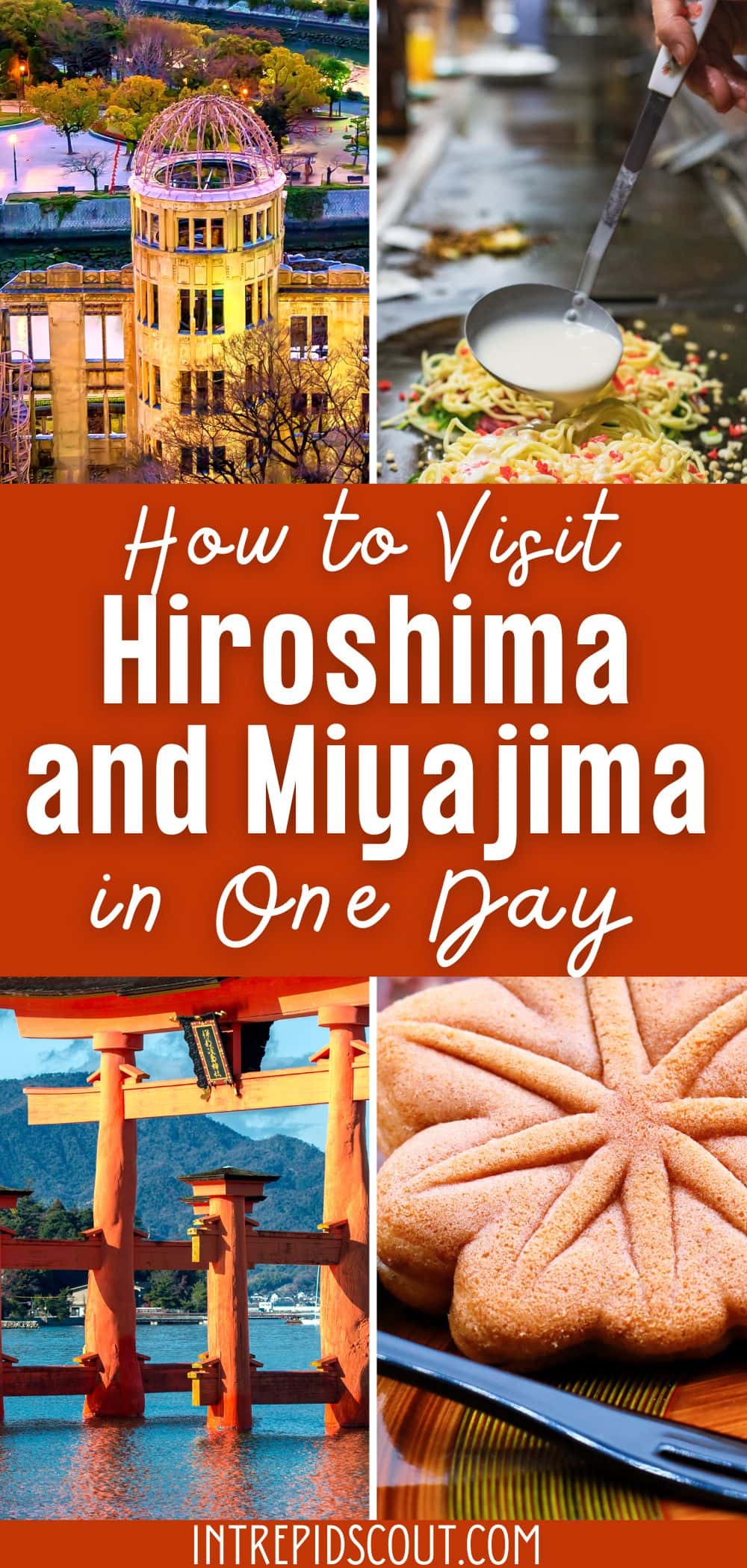
- alert('URL copied to clipboard.')).catch(err => console.error('Unable to copy to clipboard.', err))">
Share via Email
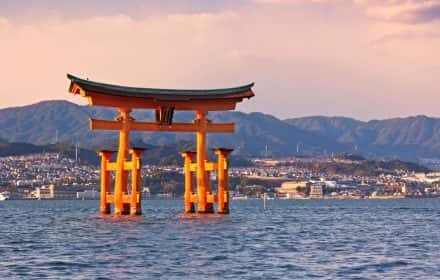
Perfect DAY TRIP to MIYAJIMA from Kyoto, Osaka, or Hiroshima (9 Things to Do)
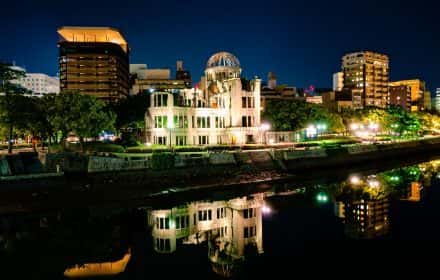
THINGS to DO in HIROSHIMA (10 Amazing Things to Do on Your First Visit)
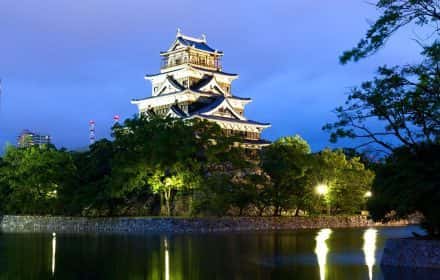
Perfect ONE DAY in HIROSHIMA (5 Things You Can't Miss+Useful Tips)
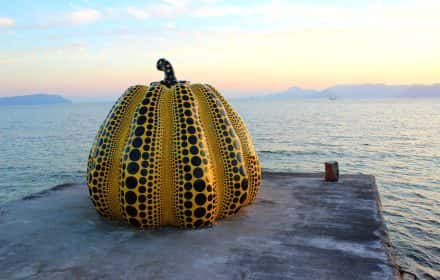
5 Fun and Easy DAY TRIPS from HIROSHIMA (How to Get There+Things to Do+Where to Stay)
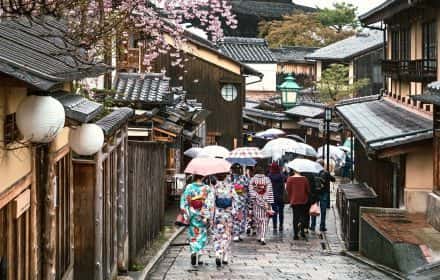
8 THINGS You Can't Miss - Perfect 2 DAYS in KYOTO
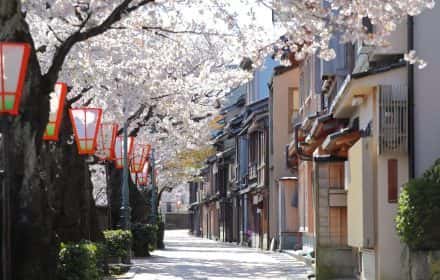
Perfect ONE DAY in KANAZAWA - 7 Things to Do (BEST TRIP from Tokyo, Kyoto, or Osaka)
@intrepid.scout
Leave an answer Cancel reply
Your email address will not be published. Required fields are marked *
The company processes your data to facilitate the publication and management of comments. You can exercise your rights of access, rectification, deletion and objection, among others, according to our Privacy policy .
Hiroshima’s Peace Memorial revisited; passing on life lessons to my grandson

After 25 years, I revisited Hiroshima with my family last weekend, as I thought it would be a valuable experience for them as it has been for me. Hiroshima may be reached from Tokyo or Nagoya via the Shinkansen bullet train in four hours and two hours-plus, respectively, with some delay due to recent snowfall.
In my first visit as a member of a Department of Transportation delegation, upon the invitation of Japan’s Ministry of Transportation, I joined officers of the Philippine Coast Guard (PCG) on a mission to explore possibilities for beefing up their maritime fleet as it became a separate uniformed service after being weaned away from the Philippine Navy. The starting point of our visit to Hiroshima last weekend was to view the ruins of the Hiroshima Prefectural Industrial Promotion Hall, now commonly called the Genbaku Dome, the Atomic Bomb or A-Bomb Dome. It was the only structure that withstood the bombing. According to historical accounts compiled in Wikipedia:
“The bomb possessed a force equivalent to 15,000 tons of TNT, and effectively obliterated the city. The building's vertical columns were able to resist the nearly vertical downward force of the blast, and parts of the concrete and brick outer walls remained intact. The building's durability can also be attributed to its earthquake-resistant design; it has held up to earthquakes before and since the bombing.”
Hiroshima was chosen as a target as it was a vital port in Honshu and was the headquarters of the 40,000-strong Japanese Second General Army. Here’s a vivid account of what happened at 8:15 a.m., Aug. 6, 1945: “Intended for the Aioi Bridge, the bomb missed its target by 240 m (790 ft) and exploded directly over the Shima Hospital, which was very near to the Genbaku Dome. The center of the blast occurred 150 m (490 ft) horizontally and 600 m (2,000 ft) vertically from the Dome. Everyone inside the building was killed instantly.”
From the A-Dome, we walked across the sprawling park toward the Children’s Peace Monument, which provided a good takeoff point for talking with my six year old grandson on why we went to Hiroshima. I told him the idea of building this monument was hatched by classmates of Sadao Sasaki, or Sada-chan, as she was fondly called. She died from a bout with leukemia which afflicted her 10 years after she and her family witnessed and experienced the catastrophe that followed the dropping of the first atomic bomb.
A bell hangs inside the monument and visitors pull a string to ring the bell. Later, while riding the train back to Nagoya, I read the book, The Children’s Peace Monument jointly written by Sada-chan’s sixth-grade friends. It is a poignant story that I hope my grandson will soon be able to read and appreciate.
From the Peace Monument, we walked across a park dotted with structures, relics and artifacts that speak volumes about the significance of what happened in Hiroshima 78 years ago. Then we proceeded to the Peace Museum that contained vivid photos, illustrations, and mementoes of the A-bomb explosion.
I recall that 25 years ago, the centerpiece was a vast, darkened area that occupied almost an entire floor of the Peace Museum’s exhibition hall, where a spotlight was beamed on a scale model of Hiroshima in the aftermath of the bombing. The ruins of the Genbaku Dome stood in mute testimony to the destruction and loss of lives.
Today, an even more vivid representation, or reenactment, of the event at 8:15 a.m. on Aug. 6, 1945, is available to Museum visitors. An actual photograph of the epicenter of the bombing has been reproduced, with sepia toning giving it an archival and vintage look. As visitors gather around the circular exhibit, they view a muted simulation of the explosion, that provides a bird’s eye-view on the extent of the death and destruction that occurred on that fateful day and hour.
One of the poignant artifacts exhibited in the Museum is labeled “Human Shadow Etched in Stone.” The stone is claimed to be part of the steps at the entrance of Sumitomo Bank’s Hiroshima branch located about 260 meters from the hypocenter. According to a 1979 report cited in Peace Seeds, an online newspaper produced by Hiroshima teenagers, “(After the bomb exploded, a huge fireball of about 300,000 degrees was formed. Within three seconds, the temperature of the surface of the ground is thought to have reached 3,000-4,000 degrees. In such conditions, is it possible that human beings could simply vanish?” Eminent Japanese professors have refuted this idea, pointing out that since “the human body is composed of carbon atoms, it can't vanish in high temperatures because ashes are bound to remain.”
According to the Peace Memorial Museum: “The surface of ‘Human Shadow Etched in Stone’ was lightened by the heat except for the” “shadow” part. It is believed that the person sitting on the stone steps and waiting for the bank to open blocked the heat and, as a result, the darker part where his shadow fell left the stone looking blackened.”
Twenty five years after my first visit to Hiroshima, I am still haunted by the question posed by a young official of the host institution: “It was clear that the A-bomb killed tens of thousands instantly, and the devastation of Hiroshima was achieved. Why was it necessary for another bomb to be dropped in Nagasaki three days later, on Aug. 9, 1945?” While an estimated 80 to 150,000 civilians and soldiers were killed in the bombing of Hiroshima, there were 150-plus soldier-casualties, and a lower death toll of 60 to 80,000 civilians killed in Nagasaki.
I recalled asking the same question in the aftermath of the Twin Tower and Pentagon plane-crash bombings on Sept. 11, 2001 and New York and Virginia, USA. Acts of violence are manifestations of strong beliefs held by certain individuals that their causes could be advanced by a demonstration of the lethal power of mass-destruction weapons. The antidote to war and violence is peace, understanding and compassion for one’s fellow human beings: “Let there be peace on earth and let it begin with me.”

Hiroshima Peace Memorial Museum
- # Peace Memorials
- # Museums of Art & Museums

INFORMATION
Communicating the reality of the atomic bombing to people with the aim of abolishing nuclear weapons and achieving lasting world peace.
The Hiroshima Peace Memorial Museum was opened in 1955 with the aim of communicating the reality of the damage caused by the atomic bomb to people all over the world and contributing to the abolition of nuclear weapons and the realization of permanent world peace, which is the heart of Hiroshima. At 8:15 am on August 6, 1945, Hiroshima was the first in the world to be damaged by an atomic bomb. Most of the town was destroyed and many people lost their lives. Even those who barely survived suffered great physical and psychological damage, and many A-bomb survivors are still suffering. The Peace Memorial Museum collects and displays photographs and materials showing the remains of the A-bomb survivors and the devastation of the A-bomb, as well as the history of Hiroshima before and after the A-bomb and the situation during the nuclear age. In addition to holding lectures on A-bomb experience by A-bomb survivors, we also lend out materials for peace learning.
〒 730-0811 1-2 Nakajima-cho, Naka-ku, Hiroshima City, Hiroshima Prefecture
Share this article, recommended route that include this destination, special feature, travel bookmarks.
All spots / experiences
This website stores cookies on your computer. nThis cookie is used by this site and other media to improve the website experience and to provide more personalized services. n For more information about our cookies, please see our Privacy Policy . This site does not track the personal information of visitors.

7 Best things to do in Japan in 2024
A s a travel enthusiast starts planning a 2024 travel itinerary, Japan, the Land of the Rising Sun, ticks all the boxes. It is the ultimate travel destination thanks to its historic streets of Kyoto, savoring delicious street food in Osaka, exploring the religious shrines, or staying at the ryokans . From the age-old cherry fields to the peaceful country roads, this place is a feast for the senses.
Springtime being this place's truly magical venture, Japan comes alive with color and energy, and visitors are feasted on a lot of enjoyable destinations to explore. Its rich tapestry of history, culture, and natural beauty offers an array of adventures for every travel enthusiast.
Disclaimer: This is purely the writer's opinion, and might have missed some favorite destinations.
The top activities to experience in Japan in 2024
Whether the avid traveler is a history buff, a food enthusiast, or a nature lover, Japan is the perfect place for their visit in 2024.
Ahead, Team Sportskeeda has thoughtfully created a list of the seven best things to do in Japan in 2024 and make the most of their visit.
- Explore Kinkaku-ji at Kyoto
- Enjoy Hanami in Tokyo
- Feed the deer at Nara
- Learn about the city's history at Hiroshima
- River cruise at Osaka
- Ski at Hokkaido
- Sun-bask on the shorelines of Okinawa
1) Explore Kinkaku-ji at Kyoto
Kyoto, the cultural heart of Japan , is a must-visit spring destination for avid travelers. Considering that the best time to travel is in late March to early April, this holiday and sightseeing place is well-known for its cherry blossoms in full bloom.
Sight-seers should not miss the spectacular Kinkaku-ji (Golden Pavilion) and the traditional Gion District. For lodging, one should consider staying at a classic ryokan to experience the hospitality at its best. Kansai International Airport, the nearest airport, can be easily commuted to thanks to local transportation.
Once in Kyoto, one should also make sure to try out the local cuisines, like kaiseki (a multicourse feast) and various matcha confectionaries. Noted diners like Nishiki Market and Pontocho Alley also rule the culinary delight list.
2) Enjoy Hanami in Tokyo
Be it the onset of autumn or spring, the metropolis of Tokyo, Japan, is always bustling with a unique blend of modernity and ritual. Including Senso-ji Temple and Meiji Shrine, this metropolis' main attractions are decorated with cherry blossoms, catering to a panoramic view.
Once in Tokyo, tourists can enjoy activities like hanami (flower viewing) picnics in Ueno Park and boat or yacht cruises along the Sumida River. For an unforgettable stay, visitors can select a hotel in the vibrant Shibuya or Shinjuku districts and indulge in a wide variety of delectable local cuisines, like sushi tempura and ramen at Tsukiji Outer Market, and the food stalls at Ameyoko Market.
Read more: 6 Best European countries to visit in Summer 2024
3) Feed the deer at Nara
Nara, well-known for its friendly deer and ancient religious shrines, it is always the perfect time for any travel enthusiast to visit this charming destination.
Visitors can engage in activities like feeding deer and exploring the picturesque Isuien Garden at Nara Park and Todai-ji Temple, the main attractions they shouldn't miss. Once here, a holiday enthusiast can stay at cozy homestays or ryokans for an authentic lodging experience. There are also sample local delicacies, like Kakinoha sushi and persimmon leaf sushi, at the best diners in the Nara-machi district.
4) Learn about the city's history at Hiroshima
Hiroshima, a Japan metropolis with a resilient spirit and a profound history, is best visited in early April. From the local Hiroshima Airport, courtesy of its travel-friendly communication, the Hiroshima Peace Memorial Park and Shukkeien Garden are the main places of interest that offer serene beauty. Here, tourists can engage in activities like visiting the Itsukushima Shrine on Miyajima Island and the Hiroshima Peace Memorial Museum to learn about the city's history.
One can also plan their stay at comfortable hotels and savor local cuisines like okonomiyaki and oysters from the best diners like Okonomimura and Mitaki-en.
5) River cruise at Osaka
Considered one of the most vibrant cities, Osaka is famed for its lively environment and mouthwatering delicacies. The best time to visit is late March or early April. Once landing at the Kansai International Airport, a vacationer can enjoy their holiday by visiting the main attractions, like Osaka Castle and Dotonbori.
Thanks to its panoramic view, travelers can enjoy local activities like exploring the bustling Kuromon Ichiba Market and river cruising along the Okawa River. Planning a 2 to 3-day trip to Osaka, a vacationer can book their stay at downtown's trendy hotels and indulge in local cuisines like takoyaki , okonomiyaki , and kushikatsu at street food stalls, and best-eating joints like Mizuno and Kani Doraku.
Read more: 6 Best treks in the world
6) Ski at Hokkaido
Hokkaido, the northernmost island, is a must-see spring holiday destination in Japan, courtesy of its spectacular natural attractions. When hiring local transportation or pre-paid cabs from New Chitose Airport, the best time to visit is late April or early May. During this time, tourists can enjoy the main attractions, such as the vast fields of Shikisai-no-Oka and the majestic beauty of Shikisai Hill.
They can engage in activities like exploring Biei's charming beauty, skiing, Onsen (hot springs), enjoying a relaxing soak in the famous Noboribetsu hot springs, or staying at comfortable ryokans or motels with stunning mountain views. They can also savor these gastronomical delights in local delicacies like fresh seafood , spicy ramen, and tasty dairy products at the best diners like Ramen Yokocho and Nijo Market.
7) Sun-bask on the shorelines of Okinawa
Off-boarding at the Naha airport, Okinawa's gorgeous shorelines and rich history welcome avid travelers, making it an excellent destination year-round for all travel enthusiasts visiting Japan. Once here, travelers can explore the lively marine life at the Churaumi Aquarium and the Ryukyu culture of historical Shuri Castle.
They can rest and recoup at beachfront resorts like the Ritz-Carlton, Okinawa, or Halekulani, Okinawa, to experience the true essence of Okinawa, Japan. Visitors can also spoil their tastebuds with the local flavors of sample Okinawan soba, agu pork , goya champuru, and rafute pork.
Read more: 6 best Spring destinations in the world to take a family vacation
These are the seven best things to do in Japan in 2024 that promise an array of unforgettable experiences for travel enthusiasts. So, avid travelers can start backpacking to enjoy their adventure-packed holiday.
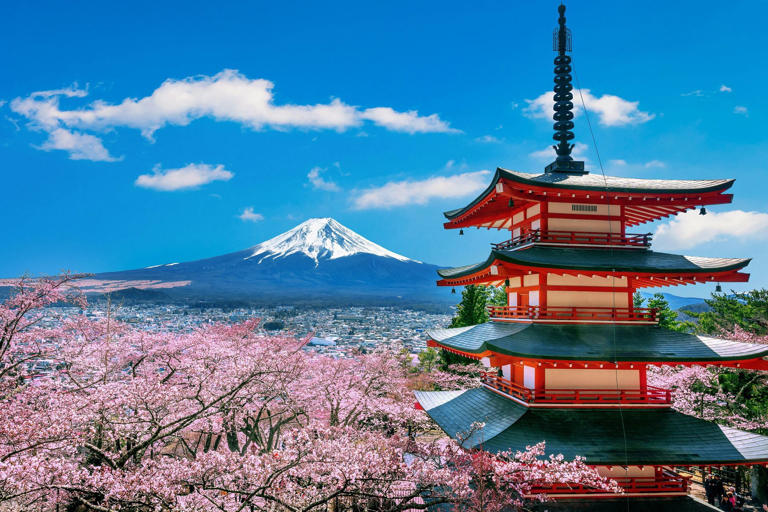
Norilsk: The city built by gulag prisoners where Russia guards its Arctic secrets
Environmental activists are frustrated by how authorities handled a diesel spill which poured into two Arctic rivers in late May.

International correspondent @DiMagnaySky
Friday 3 July 2020 23:41, UK
Please use Chrome browser for a more accessible video player

The drive from Norilsk airport to the city takes you past mile after mile of crumbling, Soviet-era factories.
It looks like an endless, rusting scrapyard - a jumble of pipes, industrial junk and frost-bitten brickwork. If you were looking for an industrial apocalypse film setting, this would be your place - but you're unlikely to get the permissions.
Norilsk was built in Stalin's times by gulag prisoners. This gritty industrial city is a testament to their endurance both of the cruelty of Stalin's regime and of the harsh polar climate. There were no thoughts then on how to build to protect the environment, just to survive it.
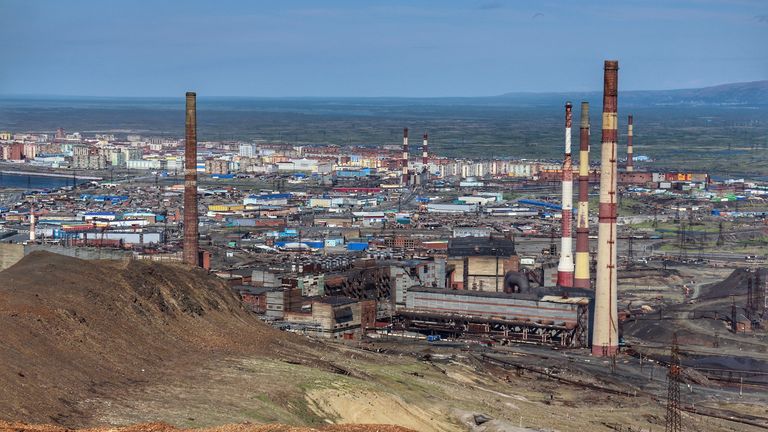
Vasily Ryabinin doesn't think much has changed, at least in ecological terms. He used to work for the local branch of the federal environmental watchdog, Rosprirodnadzor, but quit in June after exposing what he says was a failure to investigate properly the environmental impact of the gigantic diesel spill which poured into two Arctic rivers in late May.
At 21,000 tonnes, it was the largest industrial spill in the polar Arctic .
Despite the Kremlin declaring a federal emergency and sending a host of different agencies to participate in the clean-up, just last week Mr Ryabinin and activists from Greenpeace Russia found another area where technical water used in industrial processes was being pumped directly into the tundra from a nearby tailing pond. Russia's investigative committee has promised to investigate.
"The ecological situation here is so bad," Mr Ryabinin says.
"The latest constructions such as the tailing pond at the Talnack ore-processing plant were built exclusively by Nornickel chief executive Vladimir Potanin's team and supposedly in accordance with ecological standards, but on satellite images you can see that all the lakes in the vicinity have unnatural colours and obviously something has got into them."

Mining company Nornickel would disagree. It has admitted flagrant violations at the tailing pond and suspended staff it deems responsible at both the Talnack plant and at Norilsk Heat and Power plant no 3 where the diesel spill originated from.
On Thursday it appointed Andrey Bougrov, from its senior management board, to the newly-created role of senior vice president for environmental protection. It has a clear environmental strategy, provides regular updates on the status of the spill, and its Twitter feed is filled with climate-related alerts.
But what investors read is very different to the picture on the ground.

Norilsk used to be a closed city - one of dozens across the Soviet Union shut off to protect industrial secrets. Foreigners need special permissions approved by the Federal Security Service (FSB) to enter the region. It would take an invitation from Nornickel to make that happen and, for the past month since the spill, that has not been forthcoming.
Unlike in Soviet times, Russian citizens are now free to come and go. That's why our Sky News Moscow team were able to fly in and travel around the city, even if getting to the spill site was blocked. What they were able to film provides a snapshot of the immense challenge Russia faces in upgrading its Soviet-era industrial infrastructure, particularly at a time when climate change is melting the permafrost on which much of it was built.
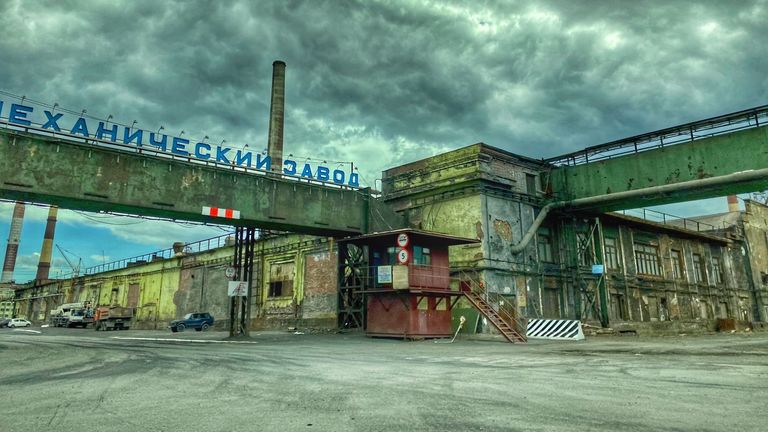
Just downwind from one of the rusting factories on the city outskirts is a huge expanse of dead land. The skeletal remains of trees stand forlorn against the howling Arctic winds. Sulphur dioxide poisoning has snuffed the life out of all that lived here. Norilsk is the world's worst emitter of sulphur dioxide by a substantial margin.
"For 80km south of here everything is dead," Mr Ryabinin says, "and for at least 10km in that direction too. Everything here depends on the wind."
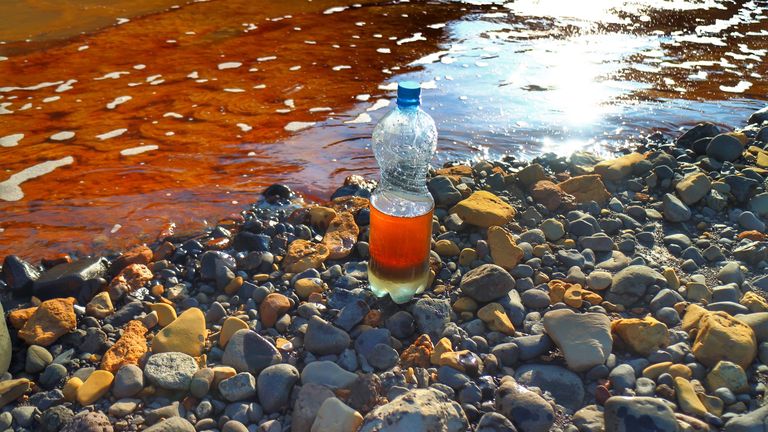
Immediately after the spill, Mr Ryabinin filmed and took samples from the Daldykan river just a few kilometres from the fuel tank which had leaked. By that point the river was a churning mix of diesel and red sludge dredged up from the riverbed by the force of the leak. Norilsk's rivers have turned red before and the chemical residues have sunk to the bottom, killing all life there. Nothing has lived in those rivers for decades.
In his capacity as deputy head of the local environmental watchdog, Mr Ryabinin says he insisted that he be allowed to fly further north to check the levels of contamination in Lake Pyasino and beyond.
Nornickel at the time claimed the lake was untouched by the spill. Mr Ryabinin says his boss encouraged him to let things be.
"I can't be sure I would have found anything, but this sort of confrontation - making sure I didn't go there with a camera, let alone with bottles for taking samples, it was all very clear to me. It was the final straw."
Rosprirodnadzor refused to comment to Sky News on Mr Ryabinin's allegations or suggestions that the agency was working hand in hand with Nornickel.
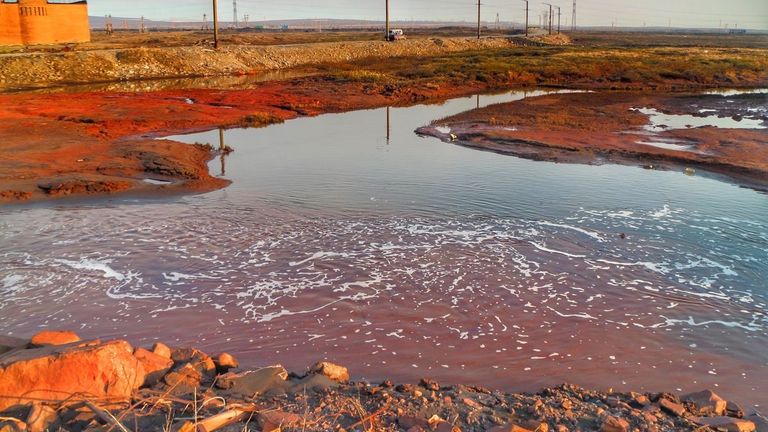
Georgy Kavanosyan is an environmental blogger with a healthy 37,000 following on YouTube. Shortly after the spill, he set out for Lake Pyasino and to the Pyasina River beyond to see how far the diesel had spread.
"We set out at night so that the Norilsk Nickel security wouldn't detect us. I say at night, but they've got polar nights there now, north of the Arctic Circle. So it's still light but it's quieter and we managed to go past all the cordons."
He is one of the few to have provided evidence that the diesel has in fact travelled far beyond where the company admits. Not just the 1,200km (745m) length of Lake Pyasino but into the river beyond.
He says his measurements indicated a volume of hydrocarbons dissolved in the water of between two and three times normal levels. He thinks after he published his findings on YouTube, the authorities' vigilance increased.
Greenpeace Russia have spent the last two weeks trying to obtain samples from Lake Pyasino and the surrounding area. They have faced difficulties getting around and flying their samples out for independent analysis.
They are now waiting for results from a laboratory in St Petersburg but say the samples remain valid technically for just four days after collection and that they weren't able to make that deadline due to the authorities' actively obstructing their work.

Elena Sakirko from Greenpeace Russia specialises in oil spills and says this has happened to her before. This time, a police helicopter flew to the hunter's hut where they were staying and confiscated the fuel for the boat they were using. Then a deputy for the Moscow city parliament tasked with bringing the samples back from Norilsk was forced to go back empty-handed.
"We were told at the airport we needed permission from the security department of Nornickel," Ms Sakirko says. "We asked them to show us some law or statement to prove that this was legal or what the basis for this was, but they haven't showed us anything and we still don't understand it."
Nornickel announced this week that the critical stage of the diesel spill is over. The company is now finalising dates for a press tour for foreign media and for other international environmentalists.
Mr Ryabinin thinks this should have happened weeks ago.
"If we don't let scientists come to the Arctic region to evaluate the impact of the accident, then in the future if anything similar happens, we won't know what to do."
A spokesperson for Nornickel said the company "is actively cooperating with the scientific community and will meticulously assess both the causes and effects of the accident."
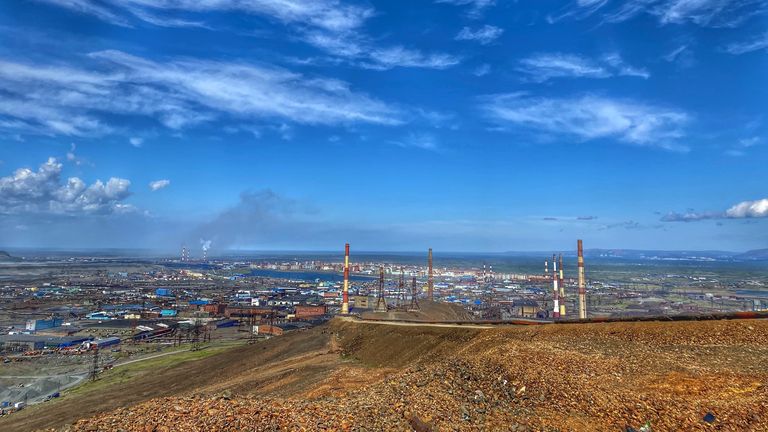
Nornickel considers permafrost thawing to be the primary cause of the accident, but is waiting for the end of investigation before making a final statement, the spokesperson said.
They added that the company "accepts full responsibility for the incidents on its sites these past two months and holds itself accountable for any infrastructural deficits or poor decisions by personnel.
"The imperative is to do everything to clean up our sites, instil a stronger culture of transparency and safety in our workforce, and ensure that such situations do not occur in the future."
- Media & Industry
- Meetings & Events
- Select Language 简体中文 繁體中文(香港) 繁體中文(臺灣) India (English) Bahasa Indonesia 한국어 ภาษาไทย Tiếng Việt Singapore (English) Philippines (English) Malaysia (English) Australia/New Zealand (English) Français Deutsch Italiano Español United Kingdom (English) Nordic countries(English) Canada (English) Canada (Français) United States (English) Mexico (español) Português العربية Japan(日本語) Global (English)
- India (English)
- Bahasa Indonesia
- Singapore (English)
- Philippines (English)
- Malaysia (English)
- Australia/New Zealand (English)
- United Kingdom (English)
- Nordic countries(English)
- Canada (English)
- Canada (Français)
- United States (English)
- Mexico (español)
- Global (English)
- Fujiyoshida
- Shimonoseki
- Ishigaki Island
- Miyako Island
- Kerama Island
- Tokyo Island
- Koka & Shigaraki
- Hida Takayama
- Ginza, Nihonbashi
- Beppu & Yufuin (Onsen)
- Ginzan Onsen
- Nagasaki Islands

- Kumano Kodo
- Shikoku Karst
- Amami Oshima
- Hachimantai
- Omihachiman
- Aizuwakamatsu

- Diving in Japan
- Skiing in Japan
- Seasonal Flowers in Japan
- Sustainable Outdoors
- Off the Beaten Track in Japan
- Scenic Spots
- World Heritage
- Home Stays & Farm Stays

- Japanese Gardens
- Japanese Crafts
- Temple Stays
- Heritage Stays
- Festivals and Events
- Theater in Japan
- Japanese Tea Ceremony
- Cultural Experiences in Japan
- Culture in Japan

- Local Cuisine Eastern Japan
- Local Cuisine Western Japan
- Local Street Food
- Japan's Local Ekiben
- Japanese Whisky
- Vegetarian and Vegan Guide
- Sushi in Japan Guide
- Japanese Sake Breweries

- Art Museums
- Architecture
- Performing Arts
- Art Festivals
- Japanese Anime and Comics
- Japanese Ceramics
- Local Crafts

- Scenic Night Views
- Natural Wonders
- Theme Parks
- Samurai & Ninja
- Iconic Architecture

- Wellness Travel in Japan
- Japanese Ryokan Guide
- A Guide to Stargazing in Japan
- Relaxation in Japan
- Forest Bathing (Shinrin-yoku)

- Experiences in Japan
- Enjoy my Japan
- National Parks
- Japan's Local Treasures
- Japan Heritage
- Snow Like No Other
- Wonder Around Japan

- Visa Information
- Getting to Japan
- Airport Access
- COVID-19: Practical Information for Traveling to Japan
- Anime Tourism
- Countryside Stays
- Accessible Tourism
- Hokkaido Great Outdoors
- Scenic World Heritage in Tohoku
- Shikoku’s Nature and Traditions
- Southern Kyushu by Rail

- Traveling by Rail
- How to Travel by Train and Bus
- JR Rail Passes
- Scenic Railways
- Renting a Car
- Sustainable Travel in Japan
- Travel Brochures
- Useful Apps
- Online Reservation Sites
- Eco-friendly Accommodation
- Luxury Accommodations
- Traveling With a Disability
- Hands-free Travel
- How to Book a Certified Tour Guide
- Volunteer Guides
- Tourist Information Center

- Japanese Manners
- Spring in Japan
- Summer in Japan
- Autumn in Japan
- Winter in Japan
- Cherry Blossom Forecast
- Autumn Leaves Forecast

- Japan Visitor Hotline
- Travel Insurance in Japan
- Japan Safe Travel Information
- Accessibility in Japan
- Vegetarian Guide
- Muslim Travelers
- Safety Tips

- JAPAN Monthly Web Magazine
- Arts & Cultures
- Nature & Outdoor
- Festivals & Events
- Insider Blog
- Things to do
- Local Guides
- Food & drink
- Traditional
- Hokuriku Shinetsu

My Favorites
${v.desc | trunc(25)}
Planning a Trip to Japan?
Share your travel photos with us by hashtagging your images with #visitjapanjp
- Hiroshima Peace Memorial Park
HOME > Japan’s Local Treasures > Hiroshima Peace Memorial Park
A tranquil spot to contemplate the preciousness of all life
Hiroshima City, Hiroshima Prefecture
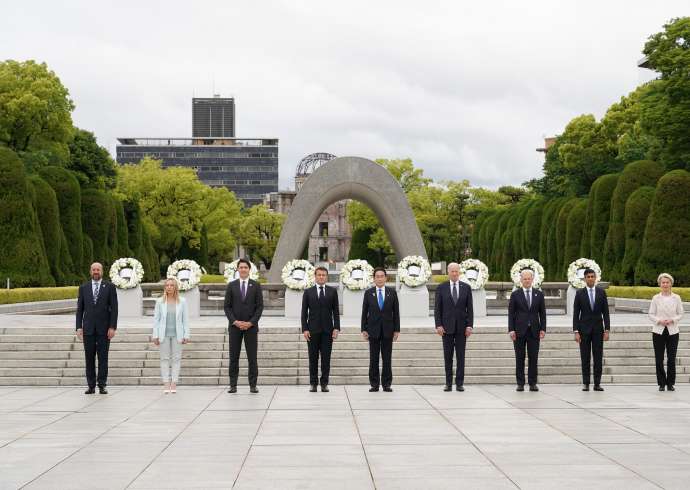
Extending southwards from the Atomic Bomb Dome and located mostly on a narrow stretch of land between two rivers, Hiroshima Peace Memorial Park is like a green island in the middle of the city. A serene space covering over 120,000 square meters, it serves to memorialize the great many lives lost in the world’s first nuclear attack, while making use of nature to reaffirm the preciousness of all life. Prior to the 1945 bombing, this district was the administrative and commercial heart of Hiroshima. In 1949, the recovering city decided the area should become a place of remembrance and contemplation, rather than simply being rebuilt. Head to the Peace Memorial Museum, designed by renowned architect Tange Kenzo (1913–2005), to learn about the history of Hiroshima before and after the bombing through pictures, movies, and displays. The effects of the bomb are explored through original photography, lifelike models, artists’ impressions, recovered items, and descriptive explanations. Take a moment to reflect on what you’ve seen at the striking Cenotaph for the A-bomb Victims, a memorial also designed by Tange. The concrete structure, built in 1952, was inspired by an ancient clay haniwa figurine and is intended to offer shelter for the souls of the deceased.
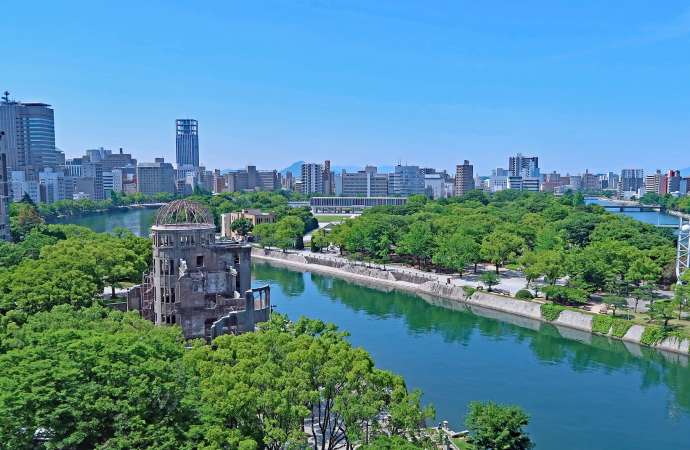
How to get there
Take the train from Kansai International Airport to JR Shin-Osaka Station (about 50 minutes). Next, take the Shinkansen bullet train to JR Hiroshima Station (about 1 hour 25 minutes). From JR Hiroshima Station, take a streetcar or a bus to the Genbaku-Dome-mae stop (about 20 minutes). The park is a 1-minute walk from the bus stop.
1 Nakajima-cho, Naka-ku, Hiroshima-shi, Hiroshima-ken
Peace Memorial Park
More Information
Chugoku Region | JNTO Official Website Hiroshima Prefecture | JNTO Official Website
Nearby Experiences

For First time visitors
- Japan’s Local Treasures
Please Choose Your Language
Browse the JNTO site in one of multiple languages
The Great Patriotic War Memorial

Most Recent: Reviews ordered by most recent publish date in descending order.
Detailed Reviews: Reviews ordered by recency and descriptiveness of user-identified themes such as wait time, length of visit, general tips, and location information.

Also popular with travelers
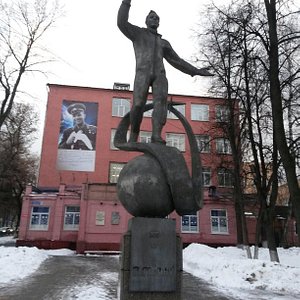
The Great Patriotic War Memorial, Lyubertsy
- (0.63 mi) Elite Hotel
- (0.64 mi) Neon Hotel
- (8.40 mi) Park Inn by Radisson Izmailovo Moscow
- (0.80 mi) Inn Spa Zona 4 Komnaty
- (0.82 mi) Mechta
- (0.10 mi) SanPol
- (0.41 mi) Sushi Master
- (2.19 mi) AnderSon
- (0.68 mi) Jazz Cafe
- (0.55 mi) SushiFast
- Phone: +90 (212) 875 19 08
- E-Mail: [email protected]
- Company Profile
- Company Policy
- Mission and Vision
- Certificates
- Aluminium Windows
- Aluminium Doors
- Aluminium Sliding Elements
- Aluminium Curtain Walls
- Aluminium Skylight Elements
- Aluminium Frames for Safety and Security
- Aluminium Conservatories
- Metal Panel Sheet Claddings
- Aluminium Entrance Frames
- Glass Structures
- Complementary Items
- Lightweight Steel Structures
- Human Resources OPEN
First successful projects, then lasting relationships!
As it has been in the past 40 years, Mimsa believe in providing competitive prices without compromising their principles of quality. We have managed to create lasting relationships based on honesty and cooperation while adding new customers each year.
Nothing is more important for us than Customer satisfaction!
Mimsa prioritizes customer satisfaction in the services they provide, and strives to understand the customers’ requests thoroughly in order to fulfil their needs and expectations. According to Mimsa Aluminium, every single customer should always be provided with the quality and services above expectations.
Every single completed project is the beginning of a lasting relationship for us.
Mimsa executes every project with experience and knowledge, while continuously improving itself and its high-quality production. Therefore, Mimsa never regards a project as a completed business. Every single project is a successful representation of lasting relationships. Thus, Mimsa pay great attention to post-sale support and keep on supplying uninterrupted support to their customers after completion.
It is very important for us that every single project we execute creates value to our workers, community and environment!
Aiming to create value for the community, environment and humankind in each project. Mimsa perceive that the occupational training of its employees and the new entrants to the workforce gets these individuals well equipped for the industry and community, and so does whatever needed without second thoughts.

IMAGES
VIDEO
COMMENTS
The Hiroshima Peace Memorial Museum collects and displays belongings left by the victims, photos, and other materials that convey the horror of that event, supplemented by exhibits that describe Hiroshima before and after the bombing and others that present the current status of the nuclear age. ... It is highly recommended to visit the museum ...
Roku Hostel Hiroshima, a property with a garden and a terrace, is set in Hiroshima, 2.5 km from Myoei-ji Temple, 2.6 km from Atomic Bomb Dome, as well as 2.9 km from Hiroshima Peace Memorial Park. The air-conditioned accommodation is 1.7 km from Hiroshima Station. The accommodation offers a shared kitchen and luggage storage space for guests.
The Hiroshima Peace Memorial (Genbaku Dome) is the only structure left standing near the hypocenter of the first atomic bomb which exploded on 6 August 1945, and it remains in the condition right after the explosion. Through the efforts of many people, including those of the city of Hiroshima, this ruin has been preserved in the same state as ...
Hiroshima Peace Memorial Park contains the Cenotaph for Atomic Bomb Victims, and other memorials, monuments, and buildings ©Courtesy of Hiroshima Prefecture. The ruins of war led to calls for enduring peace. On August 6, 1945, the first ever atomic bomb was detonated over Hiroshima, resulting in the deaths of upwards of 146,000 people. In the ...
The Hiroshima Peace Memorial Museum collects and displays belongings left by the victims, photos, and other materials that convey the horror of that event, supplemented by exhibits that describe Hiroshima before and after the bombing and others that present the current status of the nuclear age.
Hiroshima Peace Memorial Park (広島平和記念公園, Hiroshima Heiwa Kinen Kōen) is a memorial park in the center of Hiroshima, Japan.It is dedicated to the legacy of Hiroshima as the first city in the world to suffer a nuclear attack at the end of World War II, and to the memories of the bomb's direct and indirect victims (of whom there may have been as many as 140,000).
From 1950 through 1964, the Hiroshima Peace Memorial Park was established around the Dome. The Hiroshima City Council adopted a resolution in 1966 on the permanent preservation of the Genbaku Dome, officially named the Hiroshima Peace Memorial (Genbaku Dome). The Dome continues to be the park's primary landmark. [1]
Built in 1955 and part of architect Kenzo Tange's Peace Center design, it is visited by over a million visitors a year from across Japan and around the world who come to learn about the August 6, 1945 A-bombing and its aftermath. The museum is divided into two sections. The first (the East Wing) begins with a history of the city and its ...
The Ultimate Guide to Hiroshima Peace Memorial Park. A tranquil green space between two rivers that was once the site of an unprecedented tragedy, Hiroshima Peace Memorial Park is an essential part of understanding Hiroshima City's history. Here's how to plan your visit. From the end of the Edo era, the area that the Hiroshima Peace ...
The Hiroshima Peace Memorial Museum is a museum located in Hiroshima Peace Memorial Park, in central Hiroshima, Japan, dedicated to documenting the atomic bombing of Hiroshima in World War II.. The museum was established in August 1955 with the Hiroshima Peace Memorial Hall (now the International Conference Center Hiroshima []).It is the most popular of Hiroshima's destinations for school ...
When planning your visit to Hiroshima's Peace Memorial Park and Museum, it's important to take note of the practical information for visitors. The park and museum are open daily from 8:30am to 6:00pm, with last admission at 5:30pm. Admission fees vary depending on age and whether you wish to visit both the museum and the park or just one of ...
The Hiroshima Peace Memorial Museum is located on the site of the atomic bomb dropped on August 8, 1945. The museum is next to the only remnant of that horrible incident. The three floor museum is very detailed in the events and the after events of that disaster. Numerous photos detail the horrors.
1. Atomic Bomb Dome. Taking tram line 2 or 6 from Hiroshima's main train station and getting off at Genbaku Dome-mae stop, you'll be at Hiroshima's Peace Memorial Park's entrance and steps away from the skeletal remains of this 1915 building and its dome. The building is 530 feet from the hypocenter of the bomb.
Hiroshima Peace Memorial Park was designed by Japanese architect Kenzo Tange. It opened to the public in 1954. It opened to the public in 1954. The park has a total area of 122,000 square meters and houses a museum, as well as numerous memorials and monuments commemorating the people who perished during the atomic bombing of Hiroshima on August ...
The Hiroshima Peace Memorial stands as a witness of the nuclear devastation as well as a symbol of hope for peace. The building was originally built in 1915 as the Hiroshima Prefectural Commercial Exhibition Hall. Designed by Czech architect Jan Letzel, it was a three-story brick building in a then-modern European style that was topped by a dome.
Hiroshima Peace Memorial Park, located in the center of Hiroshima City was built in its current location near the hypocenter of the atomic bombing during WWII on August 6, 1945, in hopes of creating lasting world peace. In addition to the Atomic Bomb Dome World Heritage site, the park is home to the Cenotaph for the Atomic Bomb Victims, where the names of all those who lost their lives are ...
Hiroshima was one of the two Japanese cities that were destroyed by atomic bombs during World War II. Located near the site where the bomb was dropped, Hiroshima Peace Memorial Park stands as the focal point for monuments honoring the victims of the atomic bombing. The park and its surroundings are home to numerous memorials and peace-related facilities, such as Genbaku Dome and Hiroshima ...
Now, over 70 years later, visiting Hiroshima's Peace Memorial Park, which comprises a number of memorials, monuments and museums dedicated to the legacy of the attack, is one of the most important sights in Hiroshima, if not the whole of Japan. Although I knew that a visit with 'highlights' that include the Atomic Bomb Dome, the Children ...
The starting point of our visit to Hiroshima last weekend was to view the ruins of the Hiroshima Prefectural Industrial Promotion Hall, now commonly called the Genbaku Dome, the Atomic Bomb or A-Bomb Dome. It was the only structure that withstood the bombing. ... According to the Peace Memorial Museum: "The surface of 'Human Shadow Etched ...
Himeji Castle and Hiroshima's Peace Memorial testify to this past. Kyoto's temples, Tokyo's modernity, and Nara's ancient relics reveal Japan's evolution. Japan's story captivates visitors worldwide.
The Hiroshima Peace Memorial Museum was opened in 1955 with the aim of communicating the reality of the damage caused by the atomic bomb to people all over the world and contributing to the abolition of nuclear weapons and the realization of permanent world peace, which is the heart of Hiroshima. At 8:15 am on August 6, 1945, Hiroshima was the first in the world to be damaged by an atomic bomb ...
From the local Hiroshima Airport, courtesy of its travel-friendly communication, the Hiroshima Peace Memorial Park and Shukkeien Garden are the main places of interest that offer serene beauty ...
In 1954, Elemash began to produce fuel assemblies, including for the first nuclear power plant in the world, located in Obninsk. In 1959, the facility produced the fuel for the Soviet Union's first icebreaker. Its fuel assembly production became serial in 1965 and automated in 1982. 1. Today, Elemash is one of the largest TVEL nuclear fuel ...
Norilsk was built in Stalin's times by gulag prisoners. This gritty industrial city is a testament to their endurance both of the cruelty of Stalin's regime and of the harsh polar climate.
©G7 Hiroshima Summit Visit to Hiroshima Peace Memorial Park Extending southwards from the Atomic Bomb Dome and located mostly on a narrow stretch of land between two rivers, Hiroshima Peace Memorial Park is like a green island in the middle of the city. A serene space covering over 120,000 square meters, it serves to memorialize the great many ...
The Great Patriotic War Memorial. 3 reviews. #26 of 27 things to do in Lyubertsy. Monuments & Statues. Write a review. Full view. All photos (1) Suggest edits to improve what we show. Improve this listing.
Mission and Vision. Mission. First successful projects, then lasting relationships! As it has been in the past 40 years, Mimsa believe in providing competitive prices without compromising their principles of quality. We have managed to create lasting relationships based on honesty and cooperation while adding new customers each year.